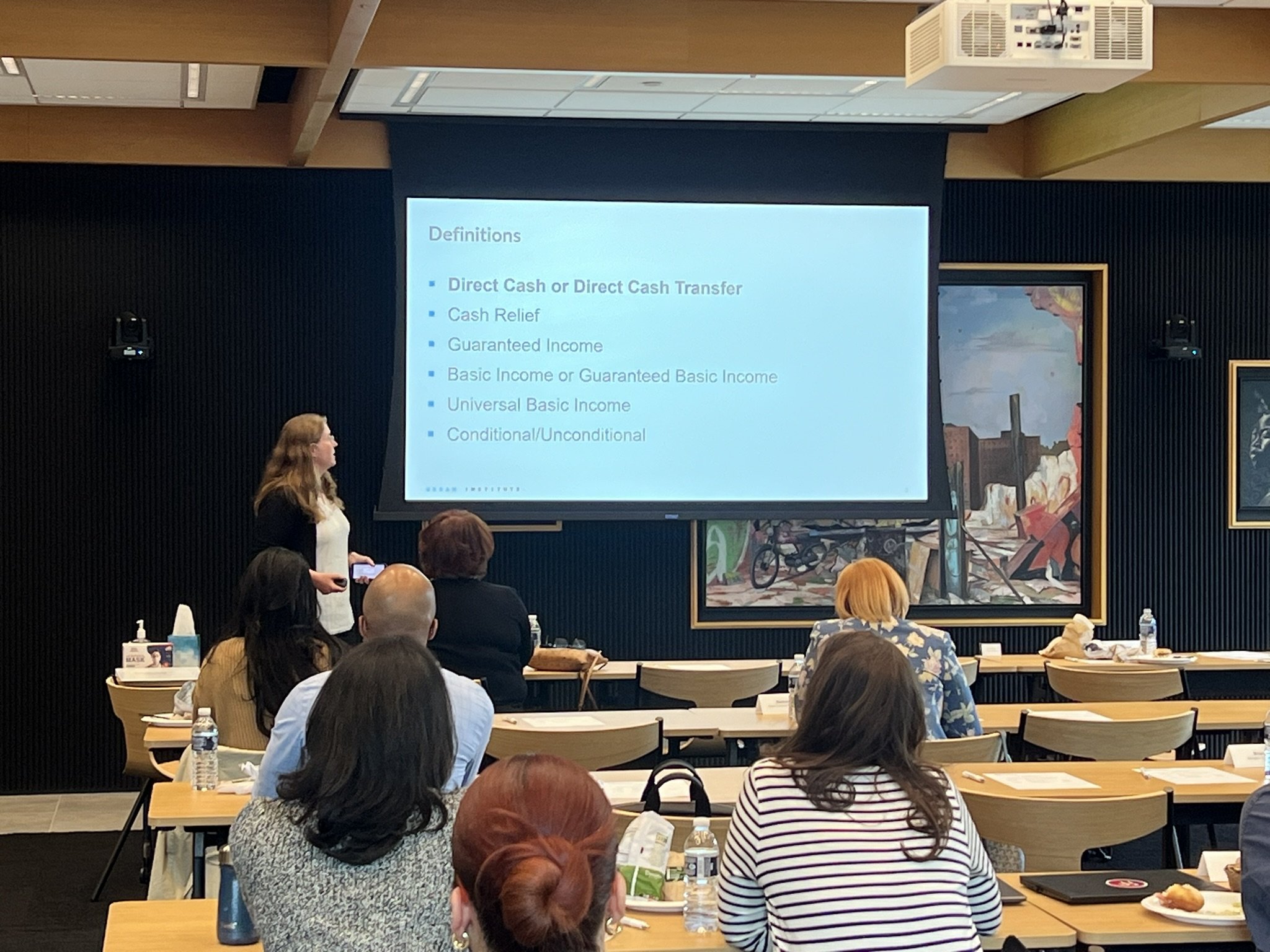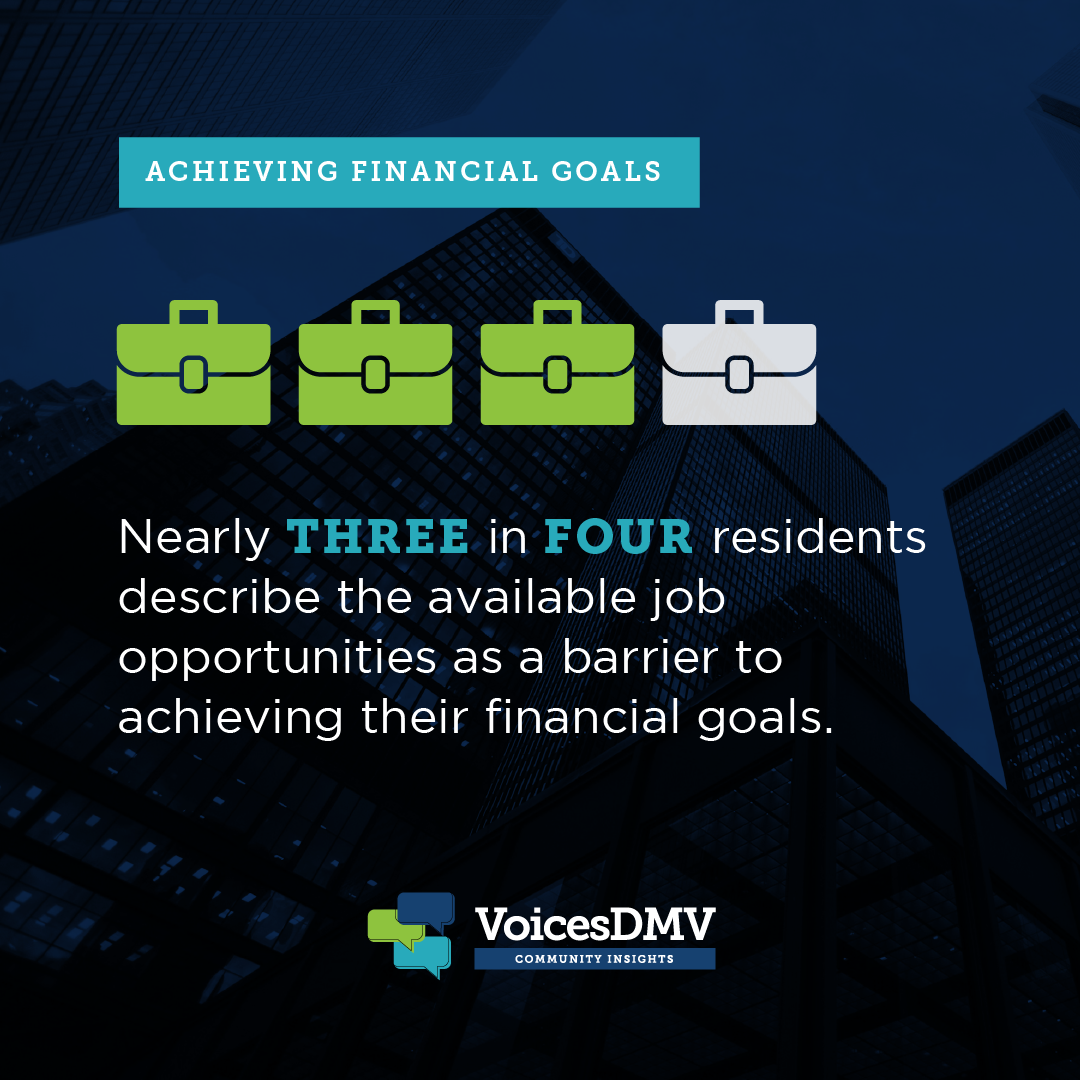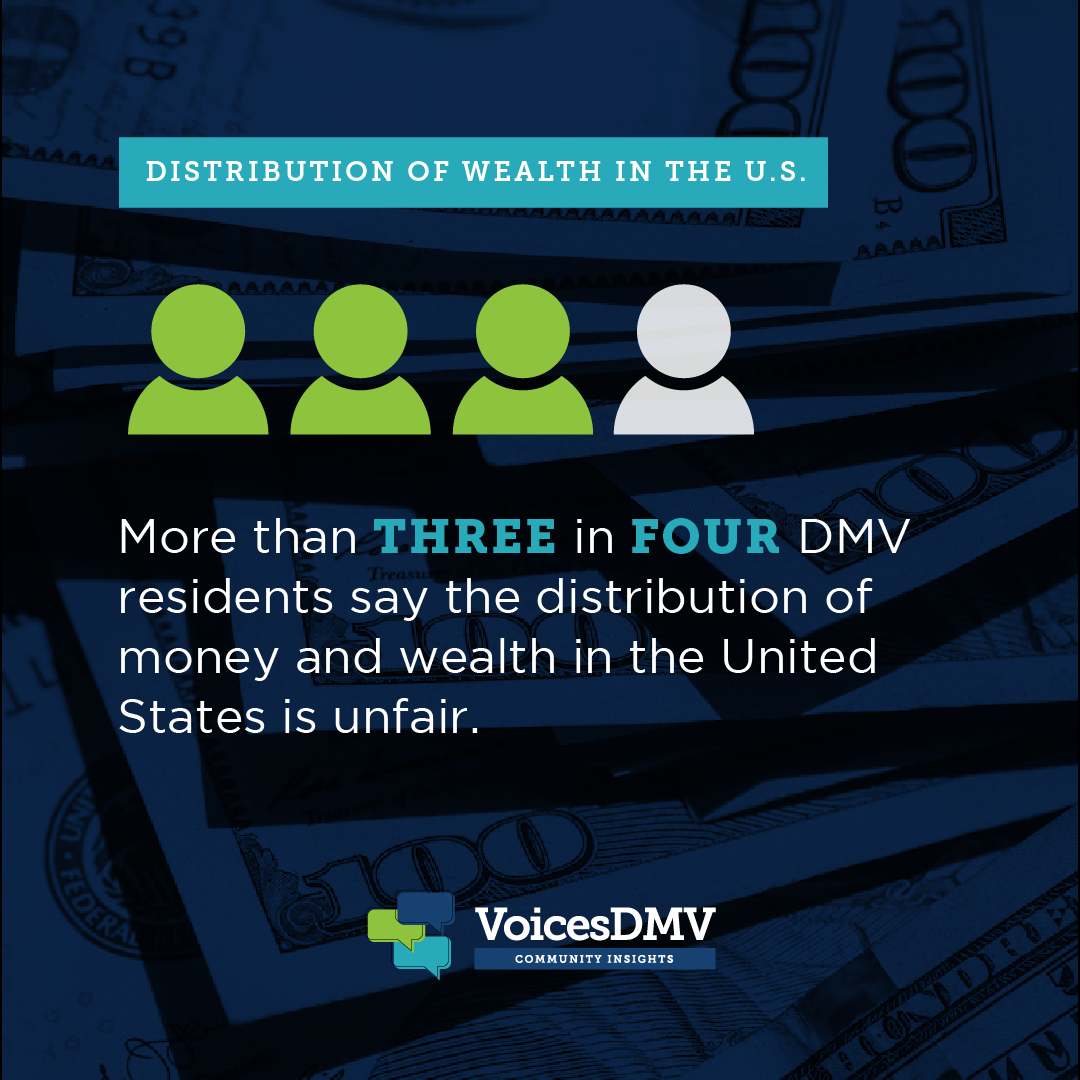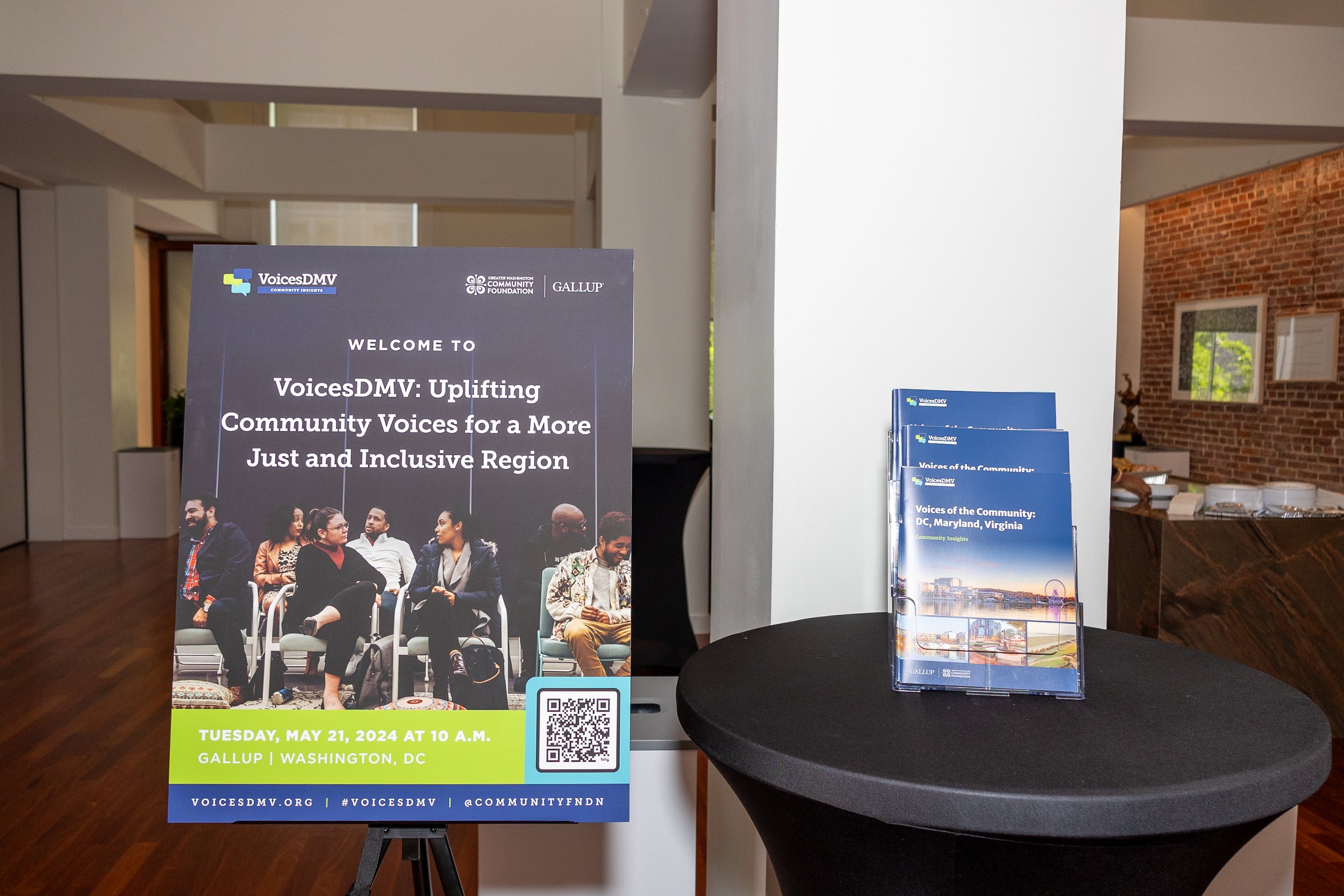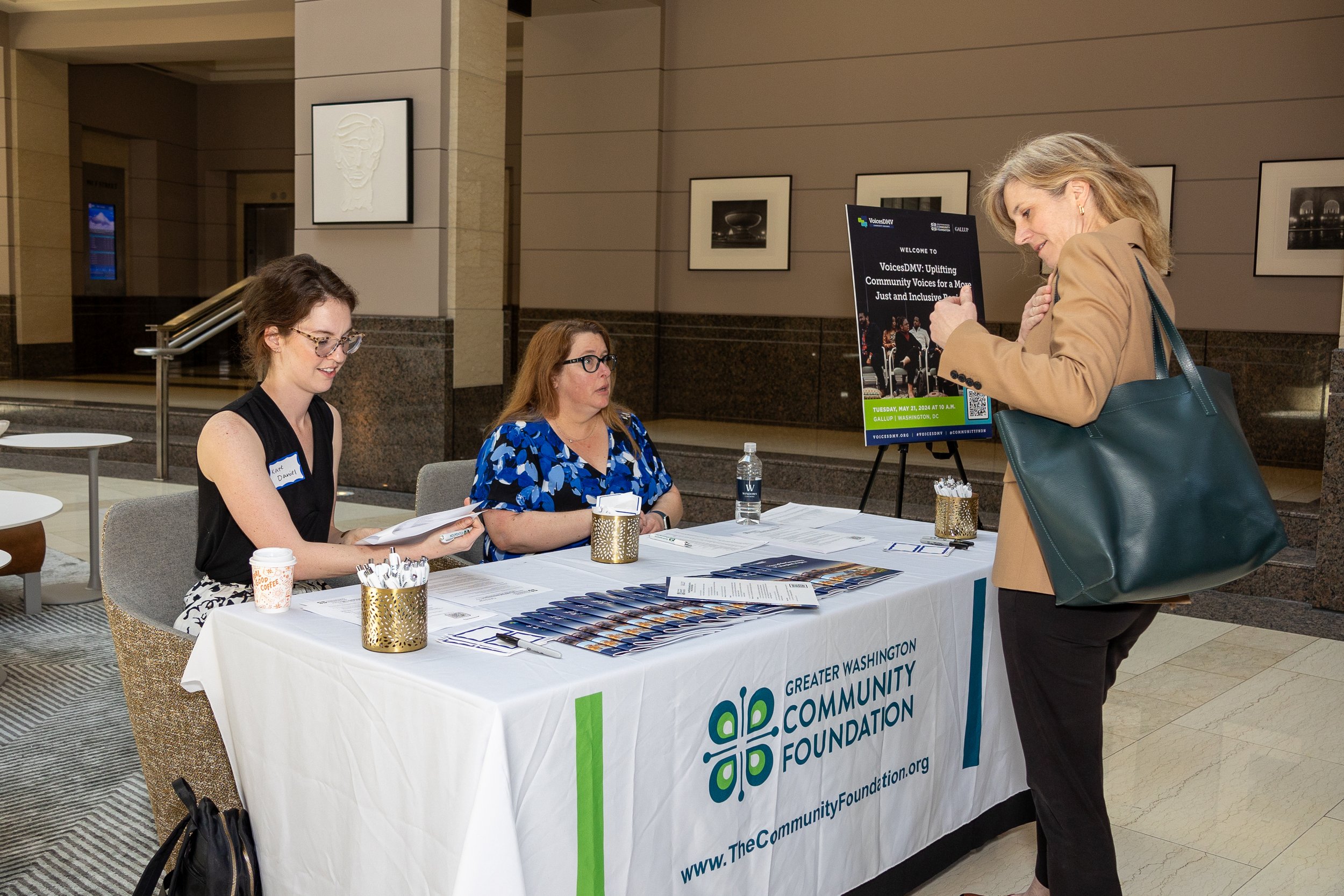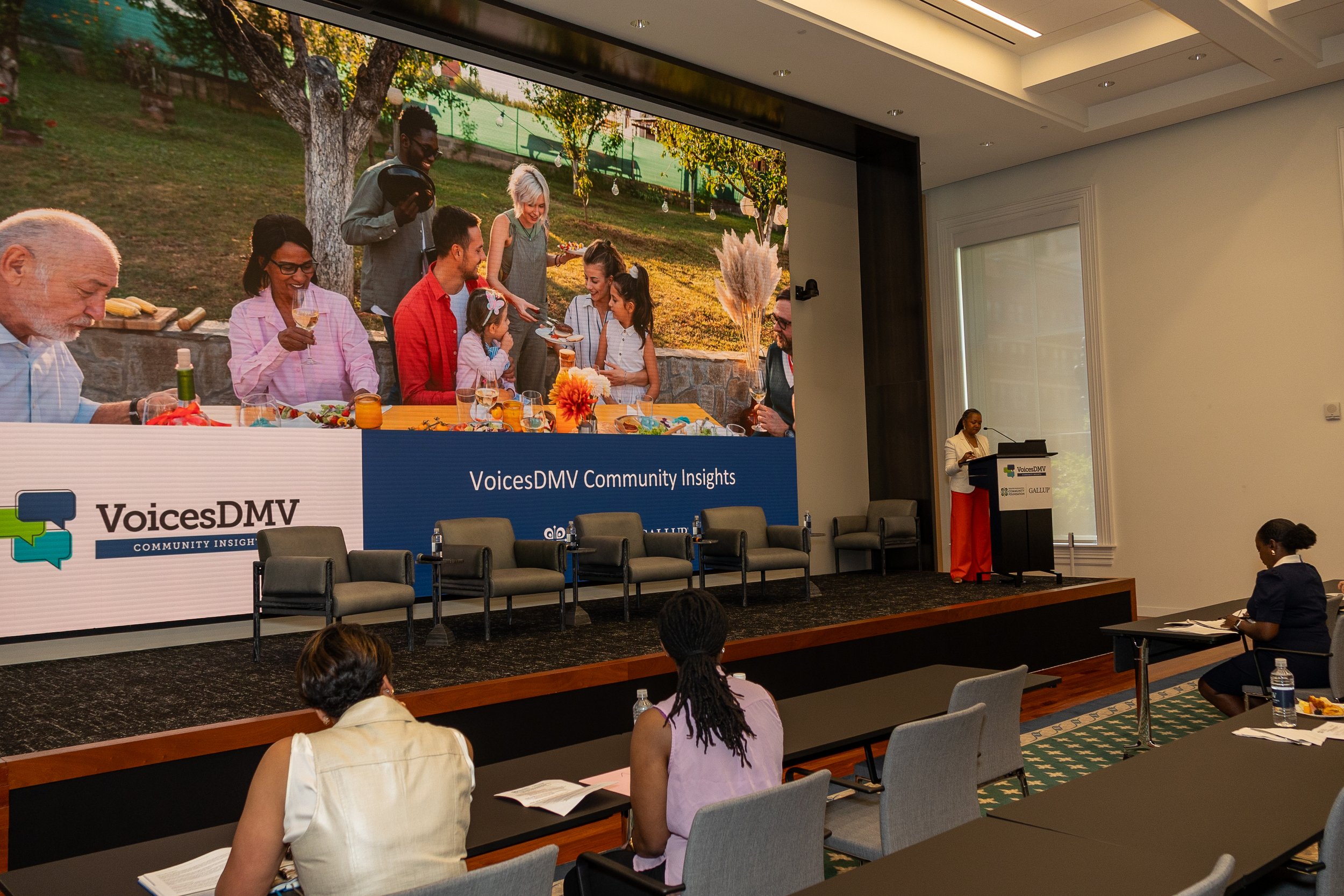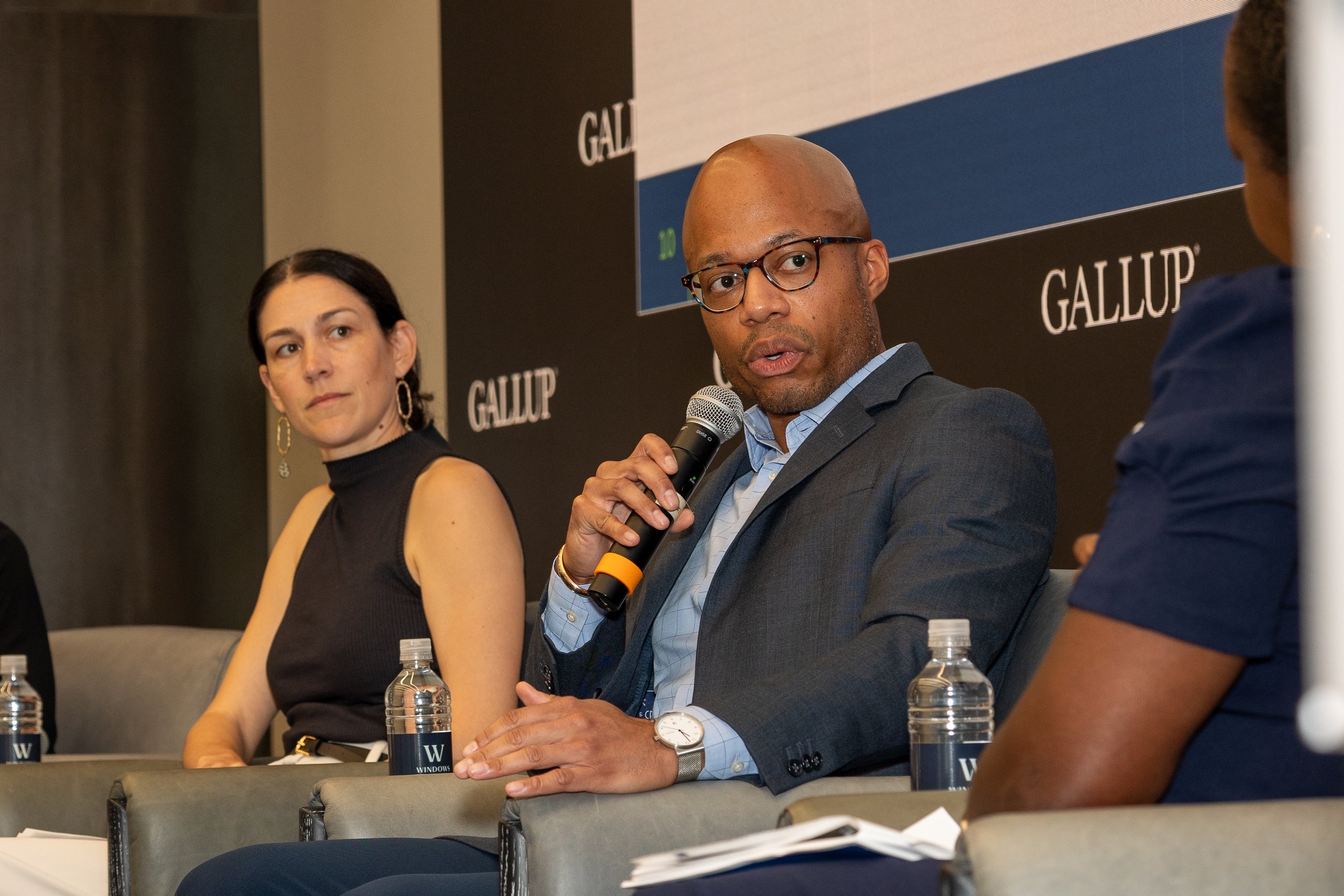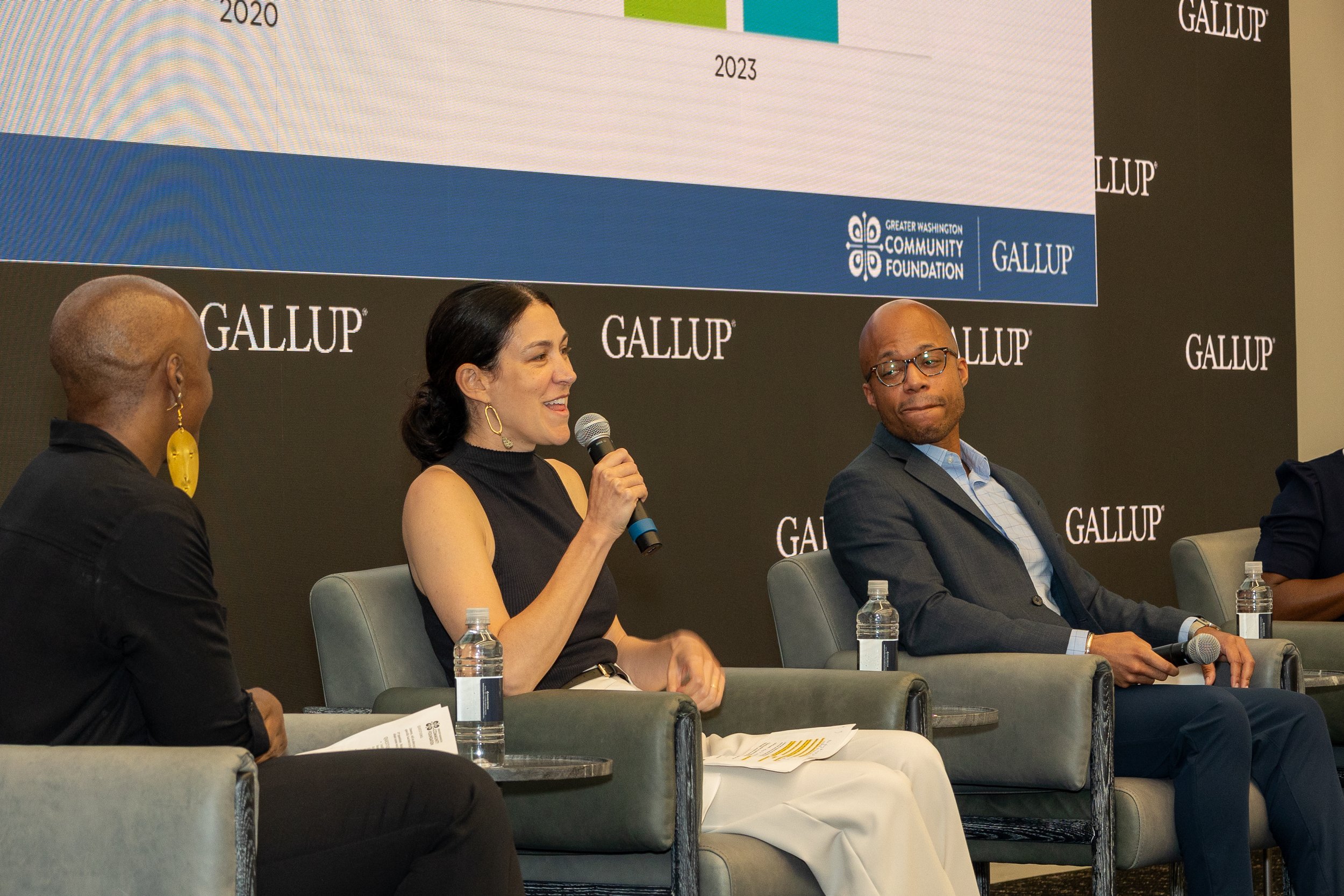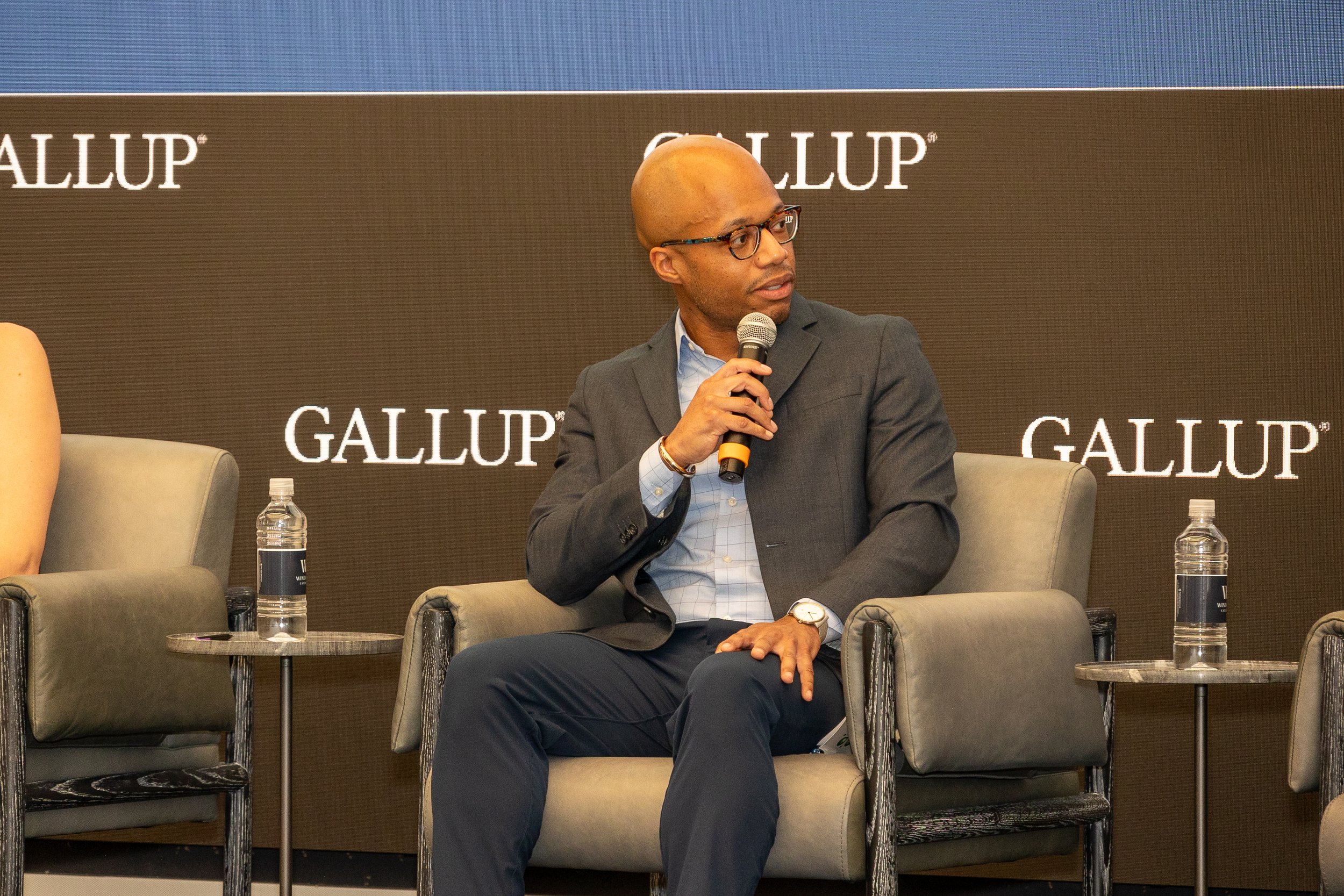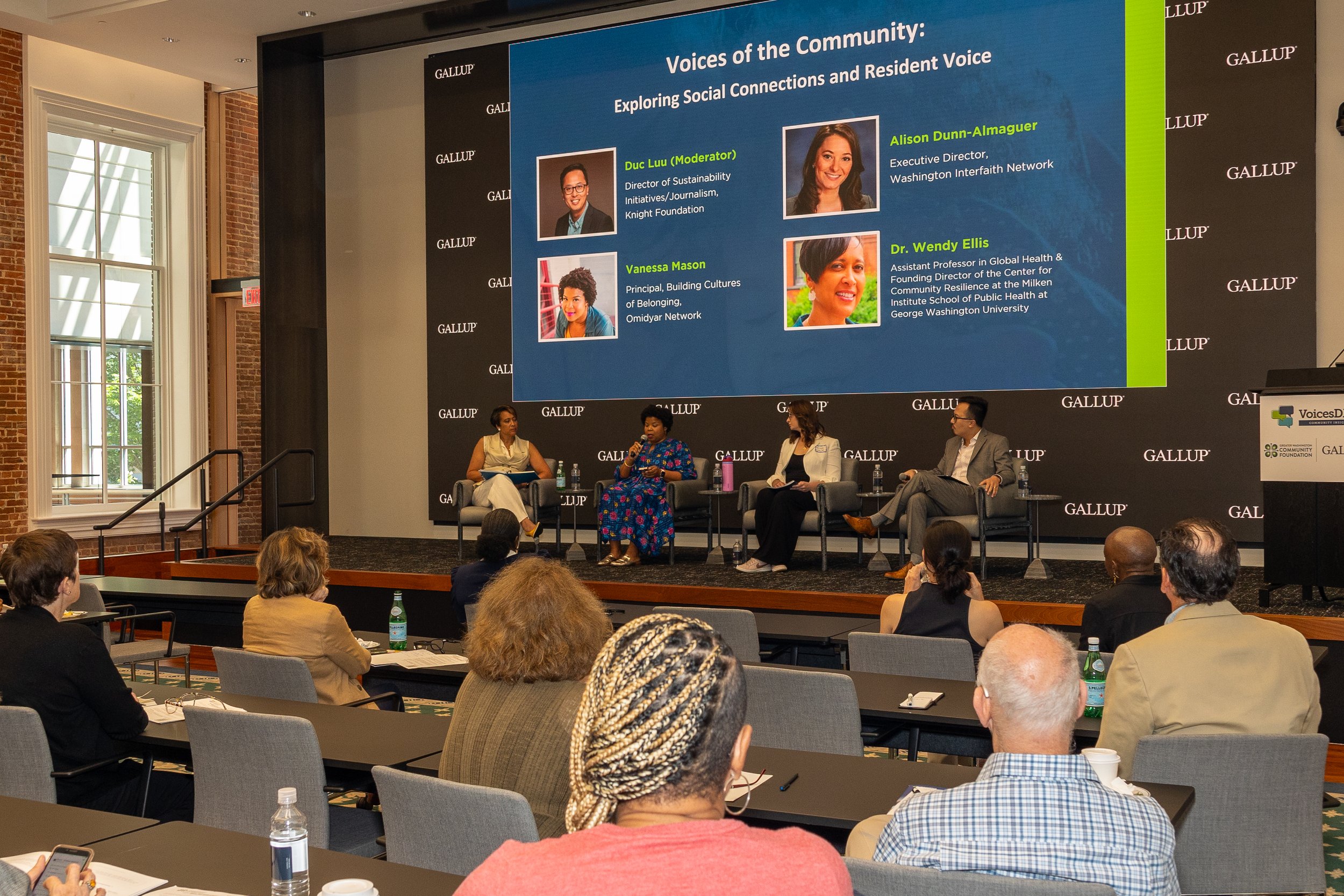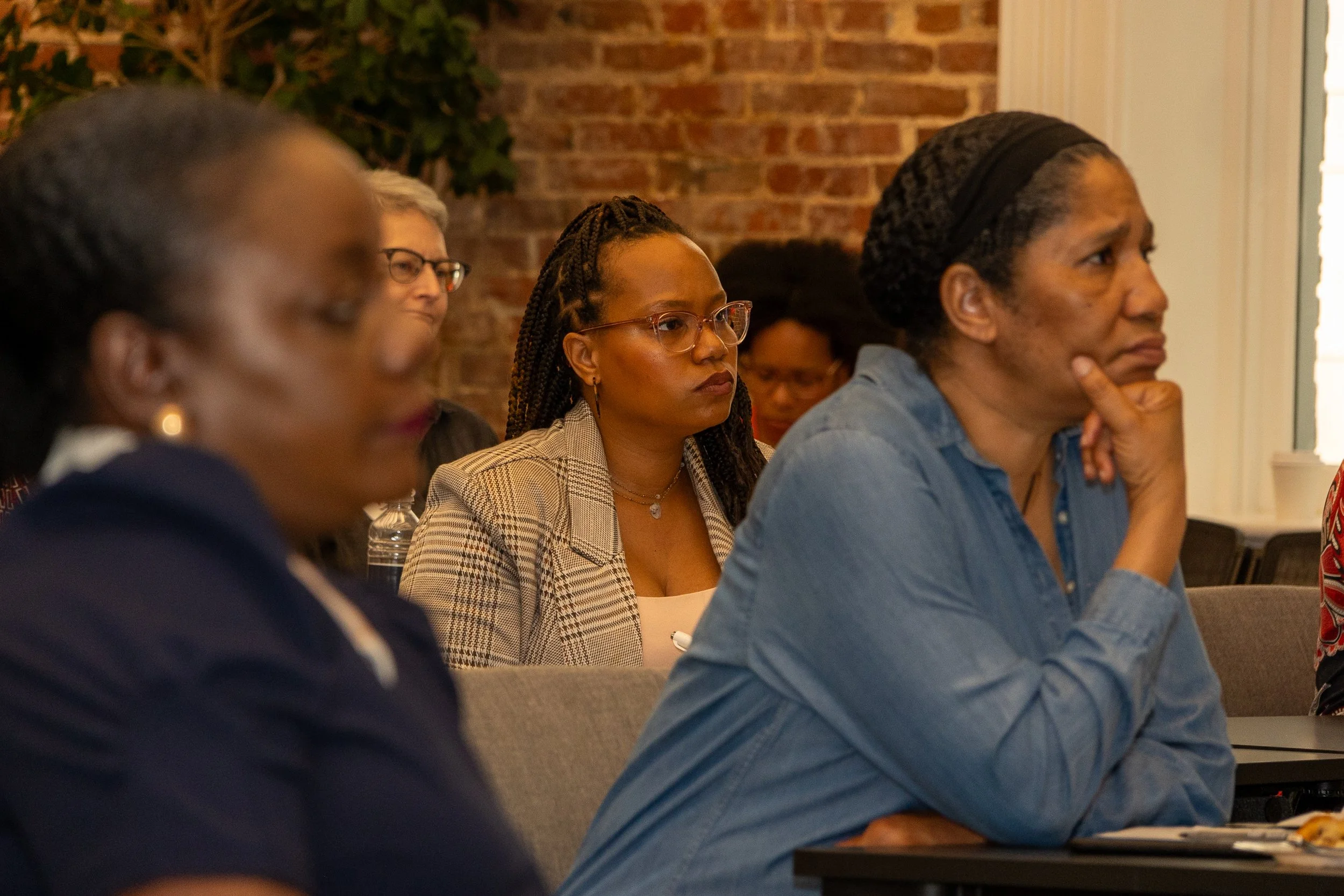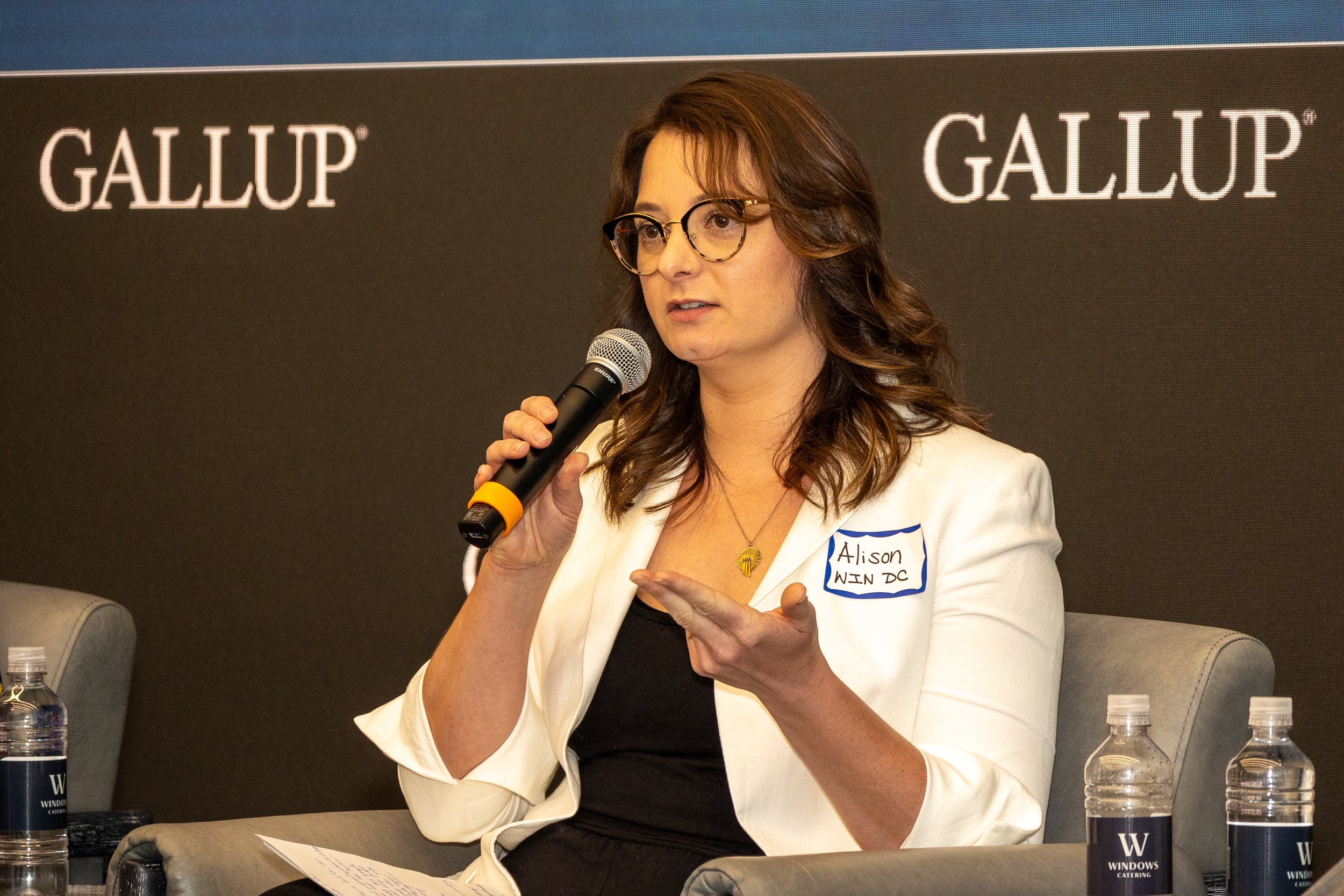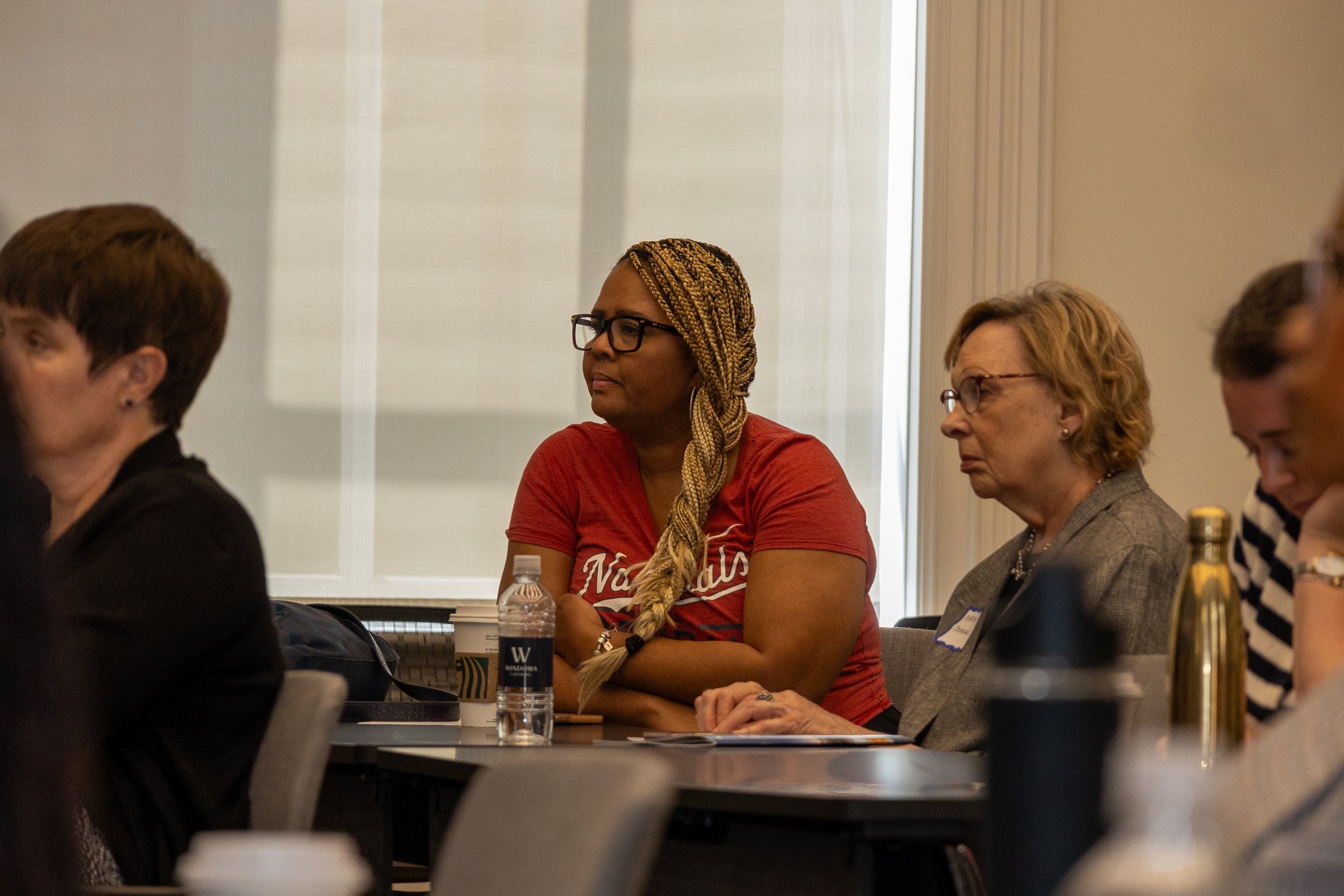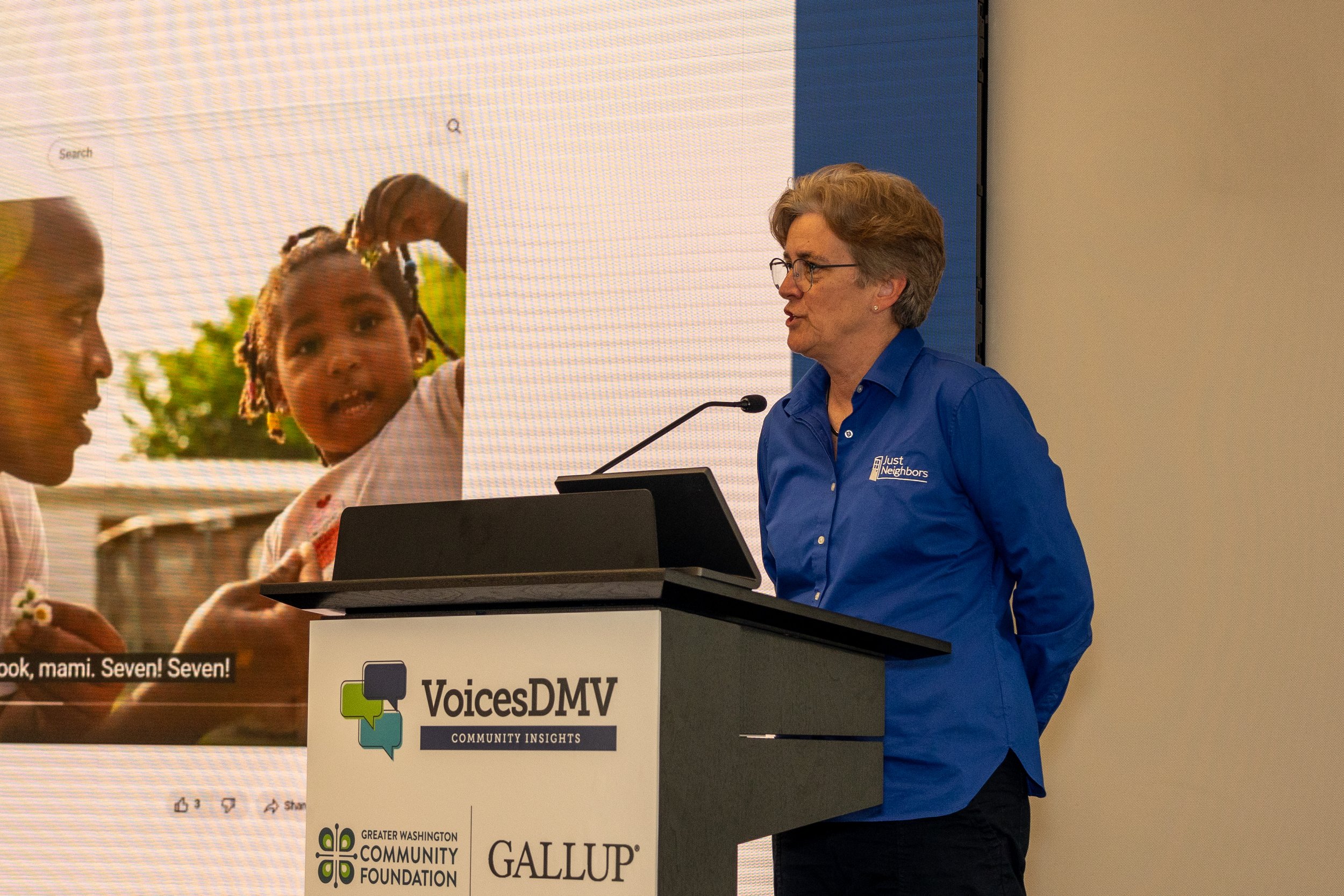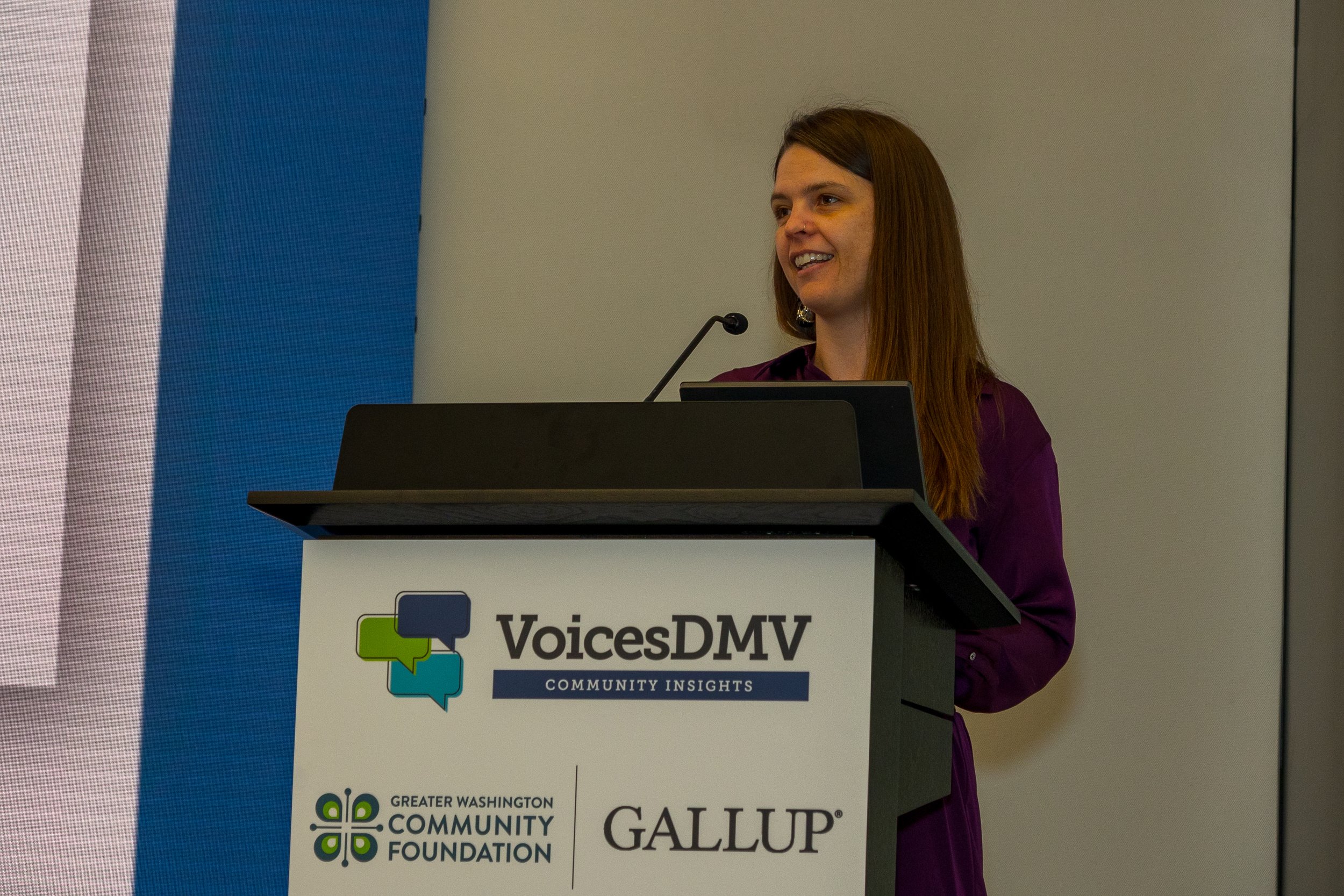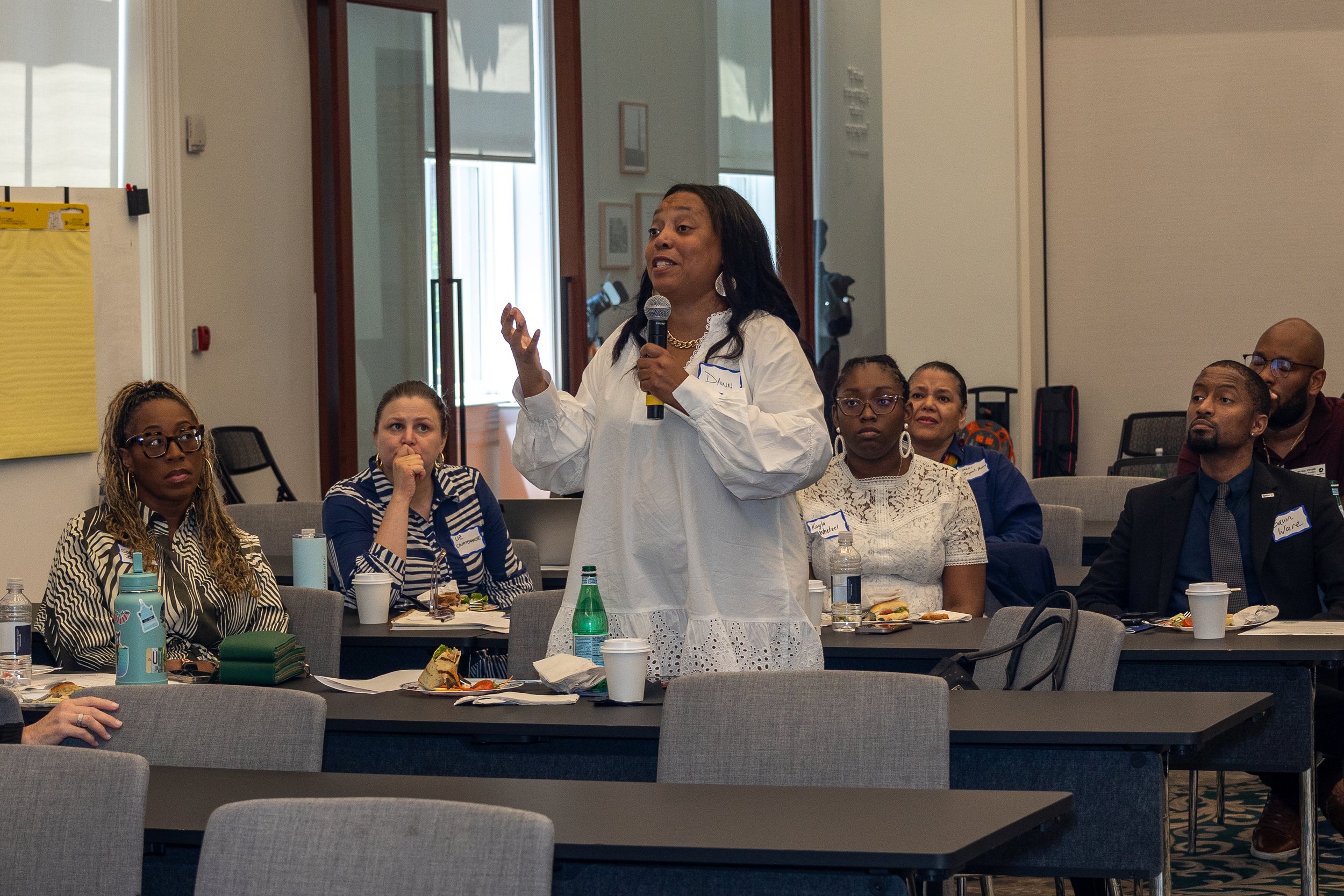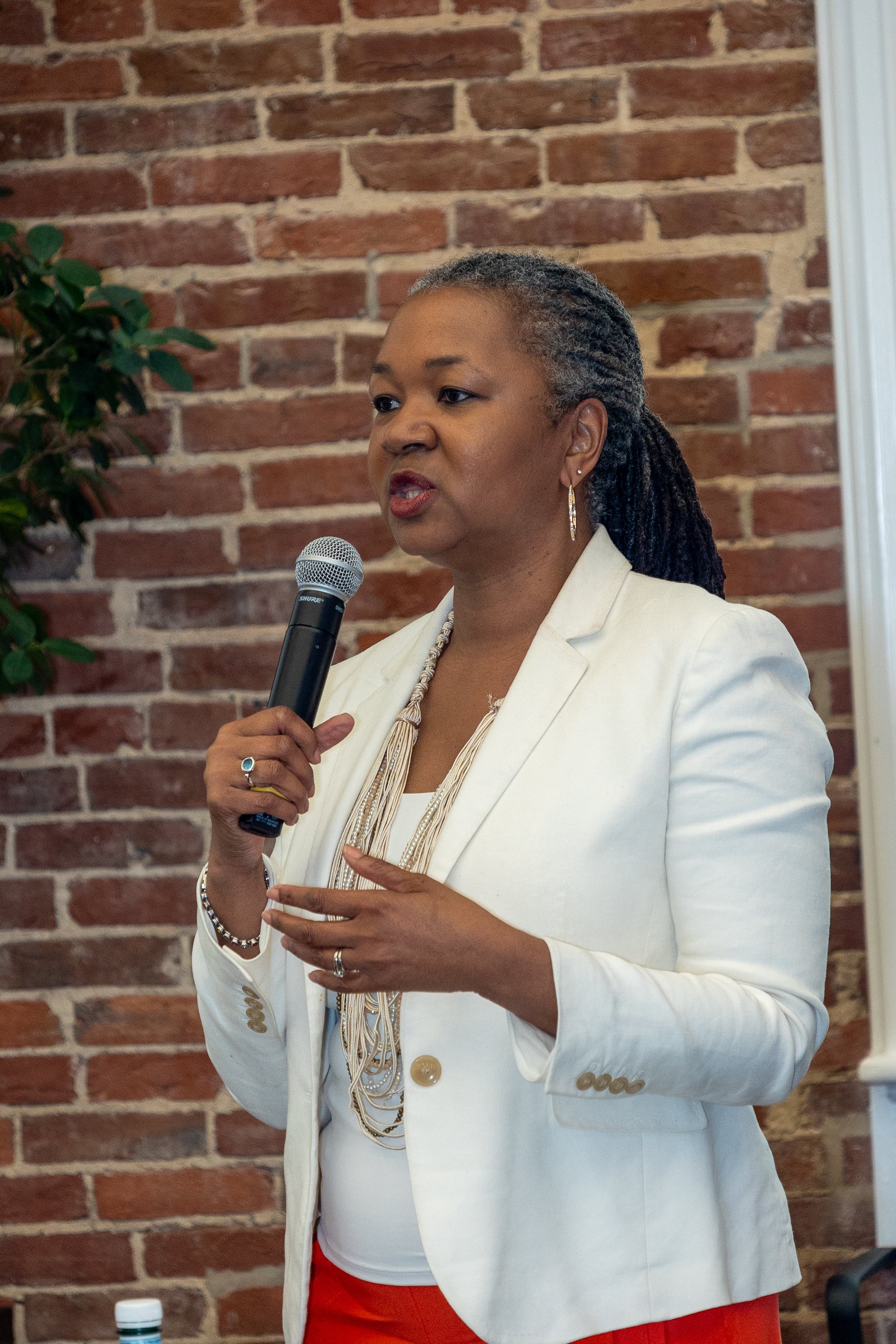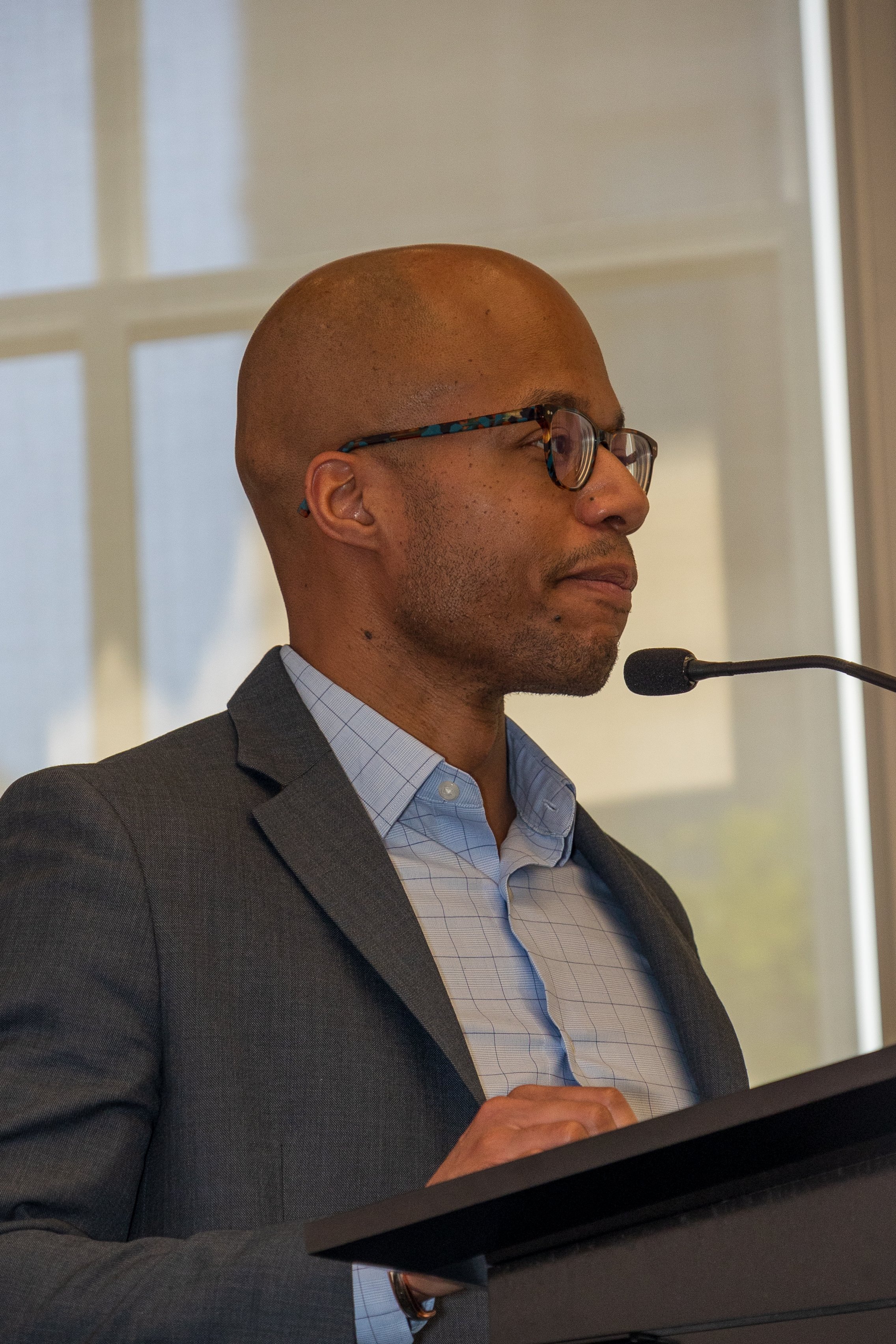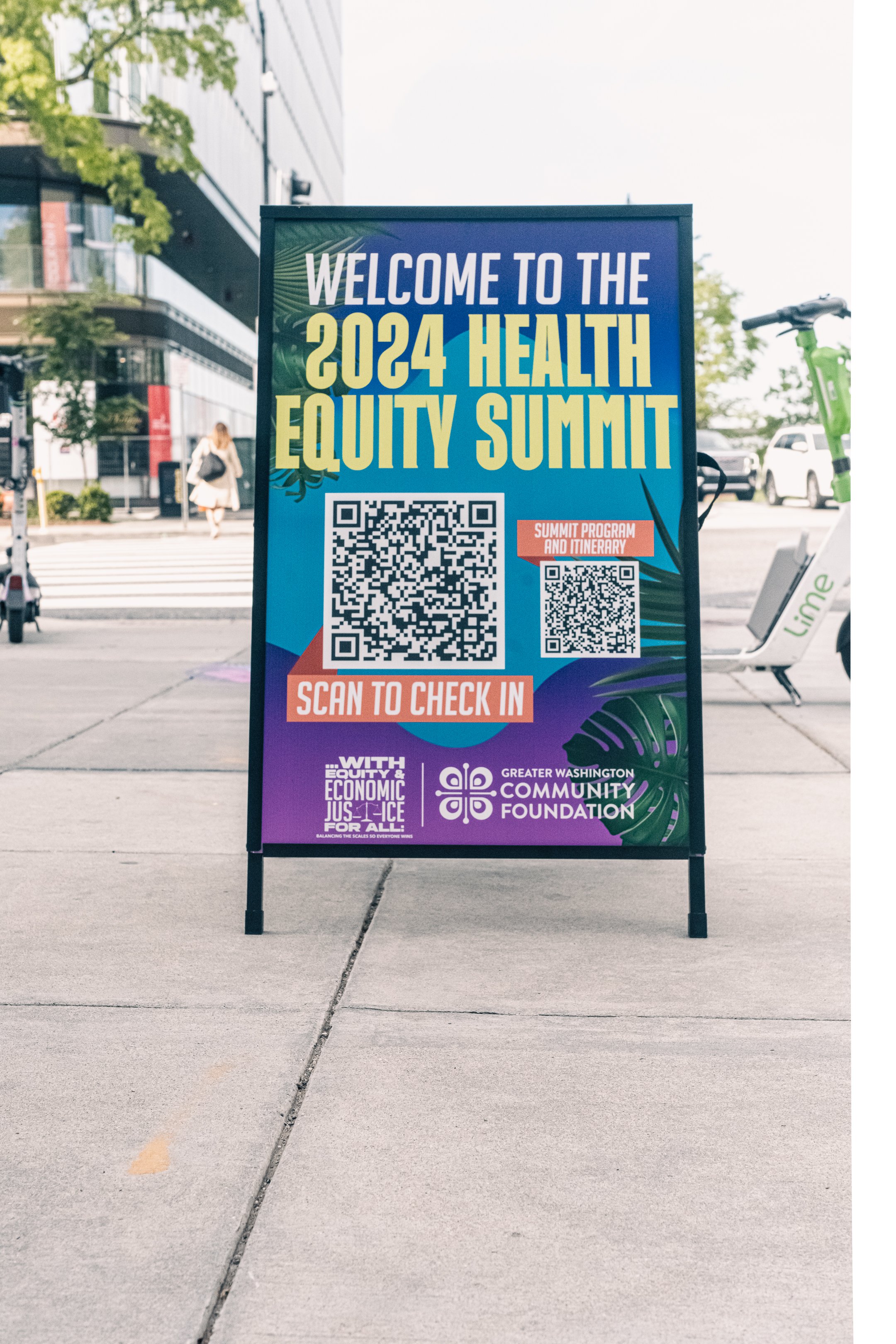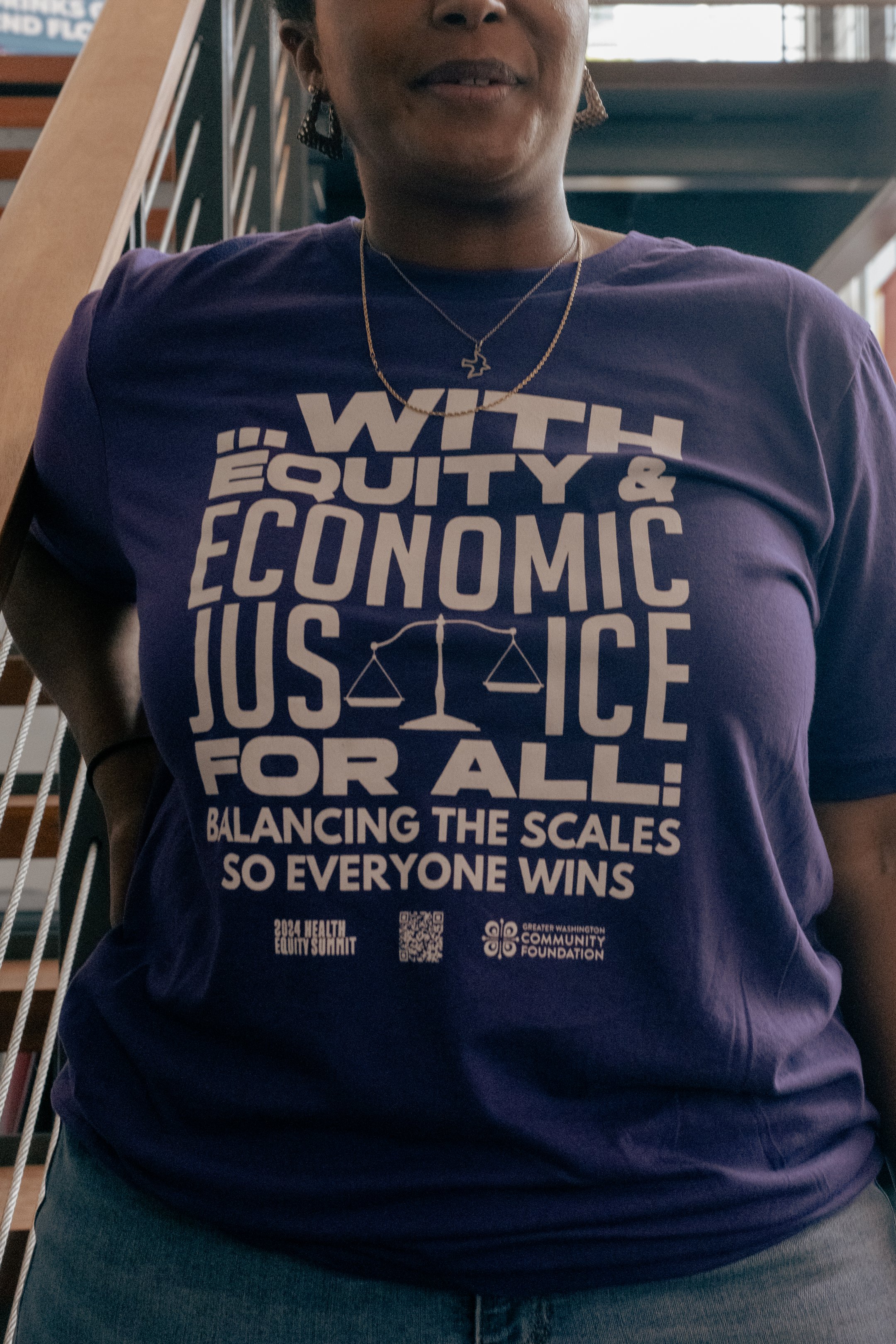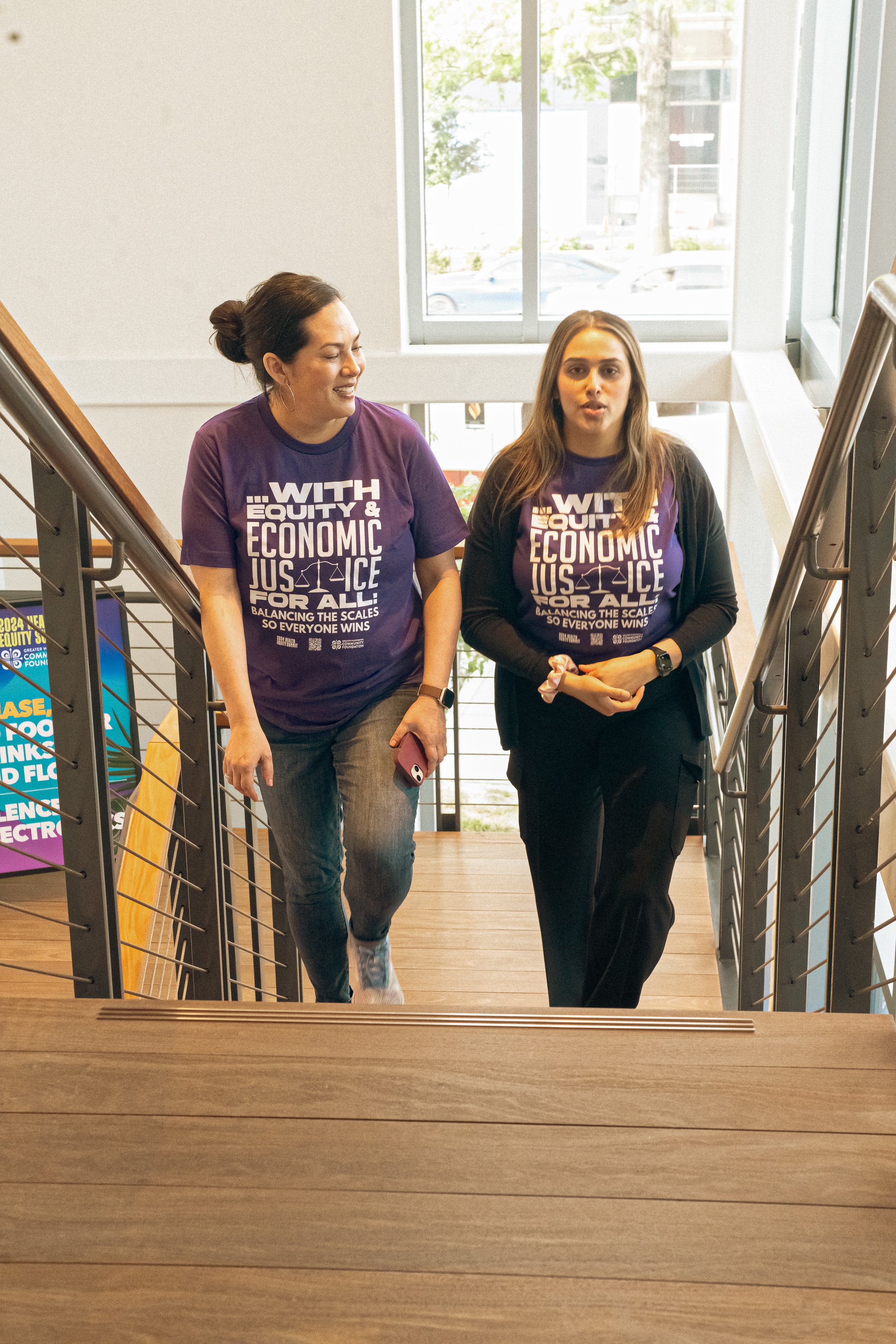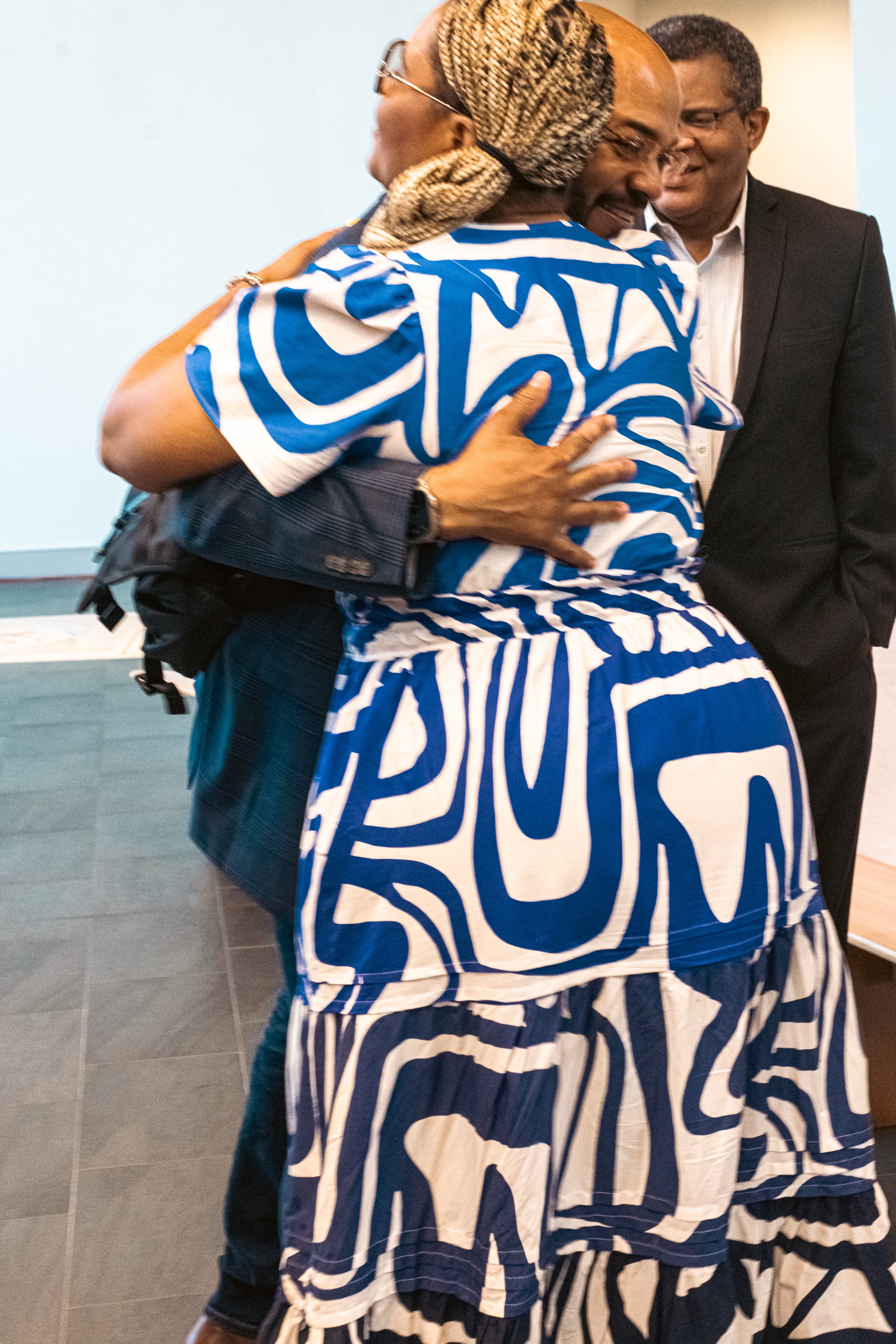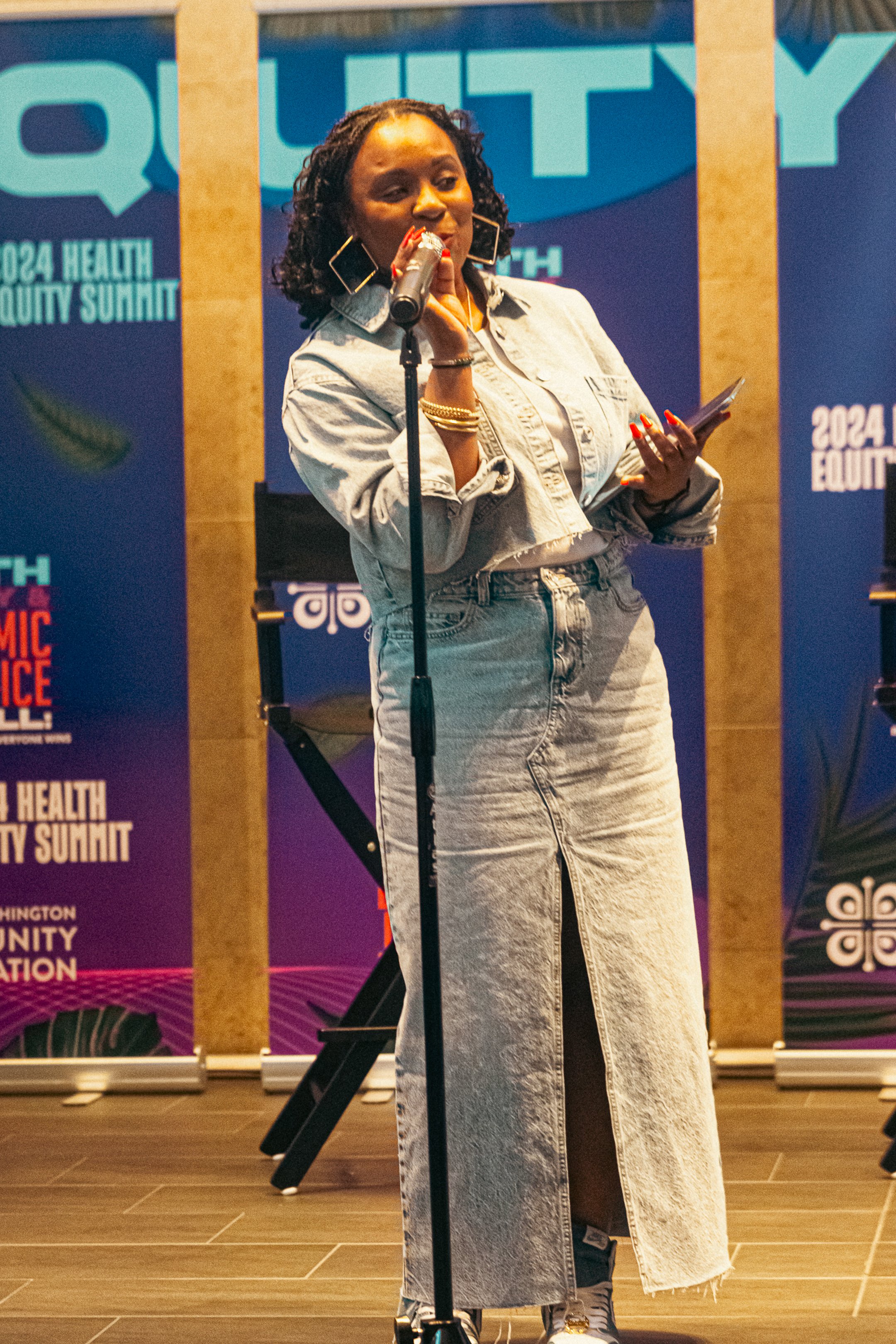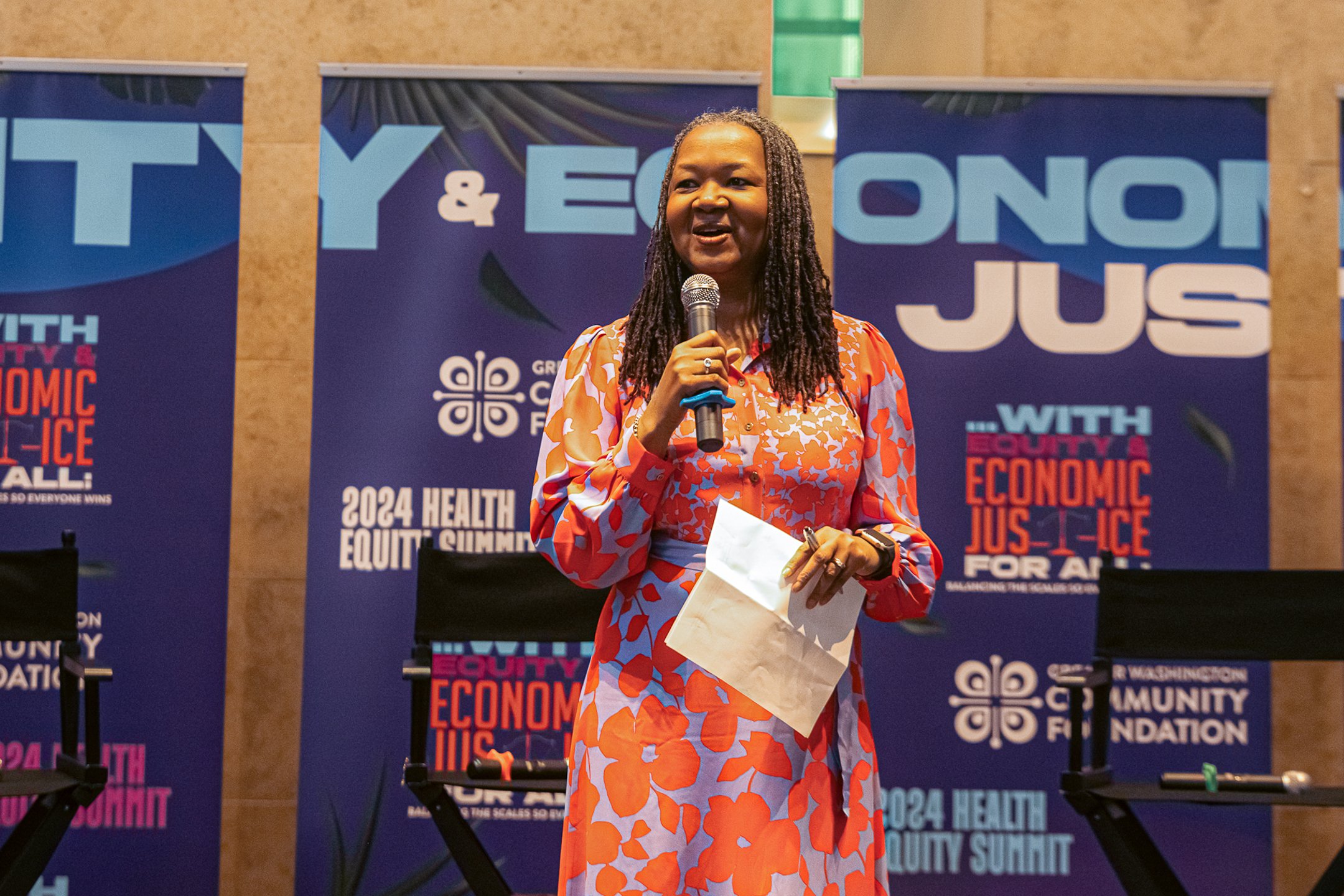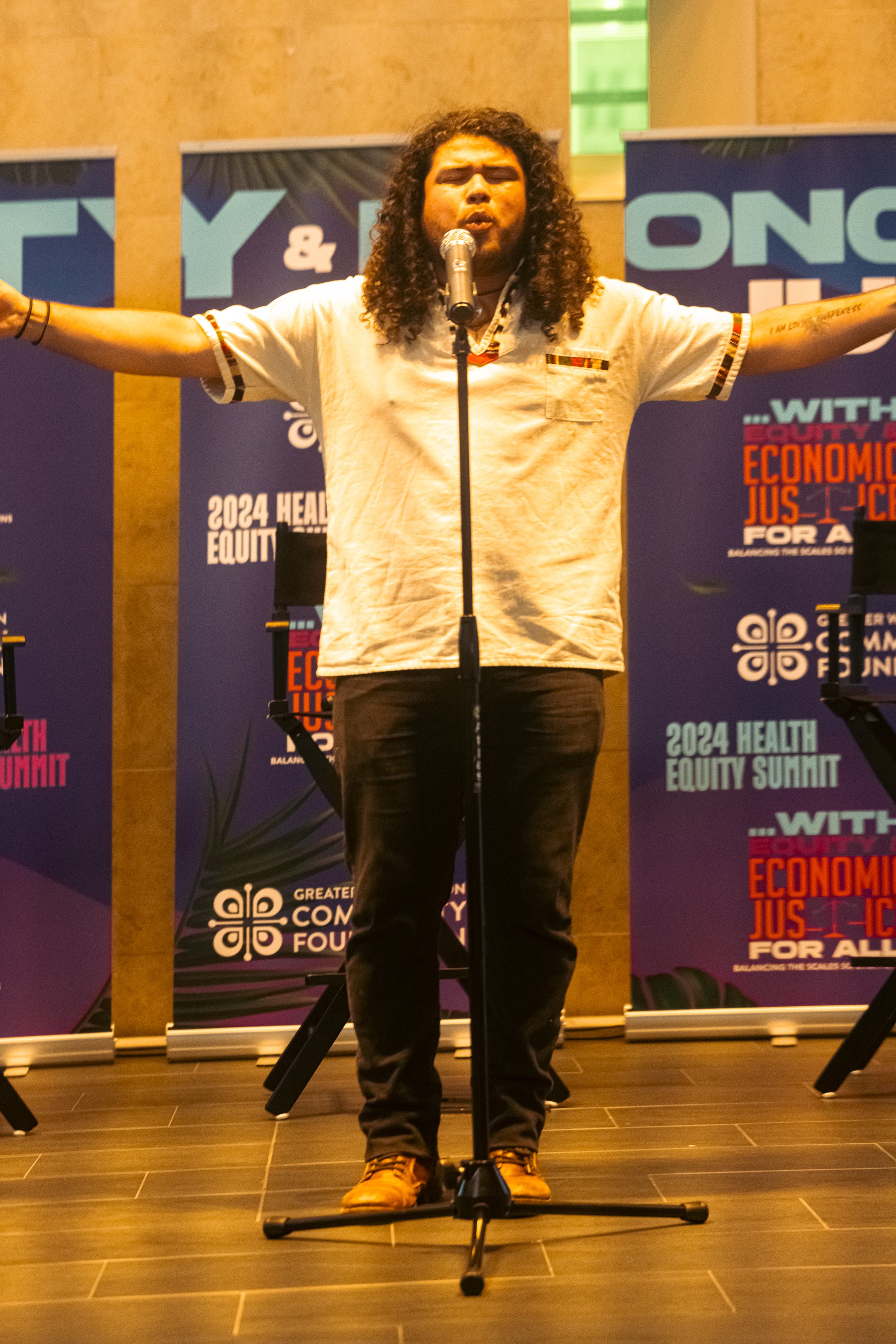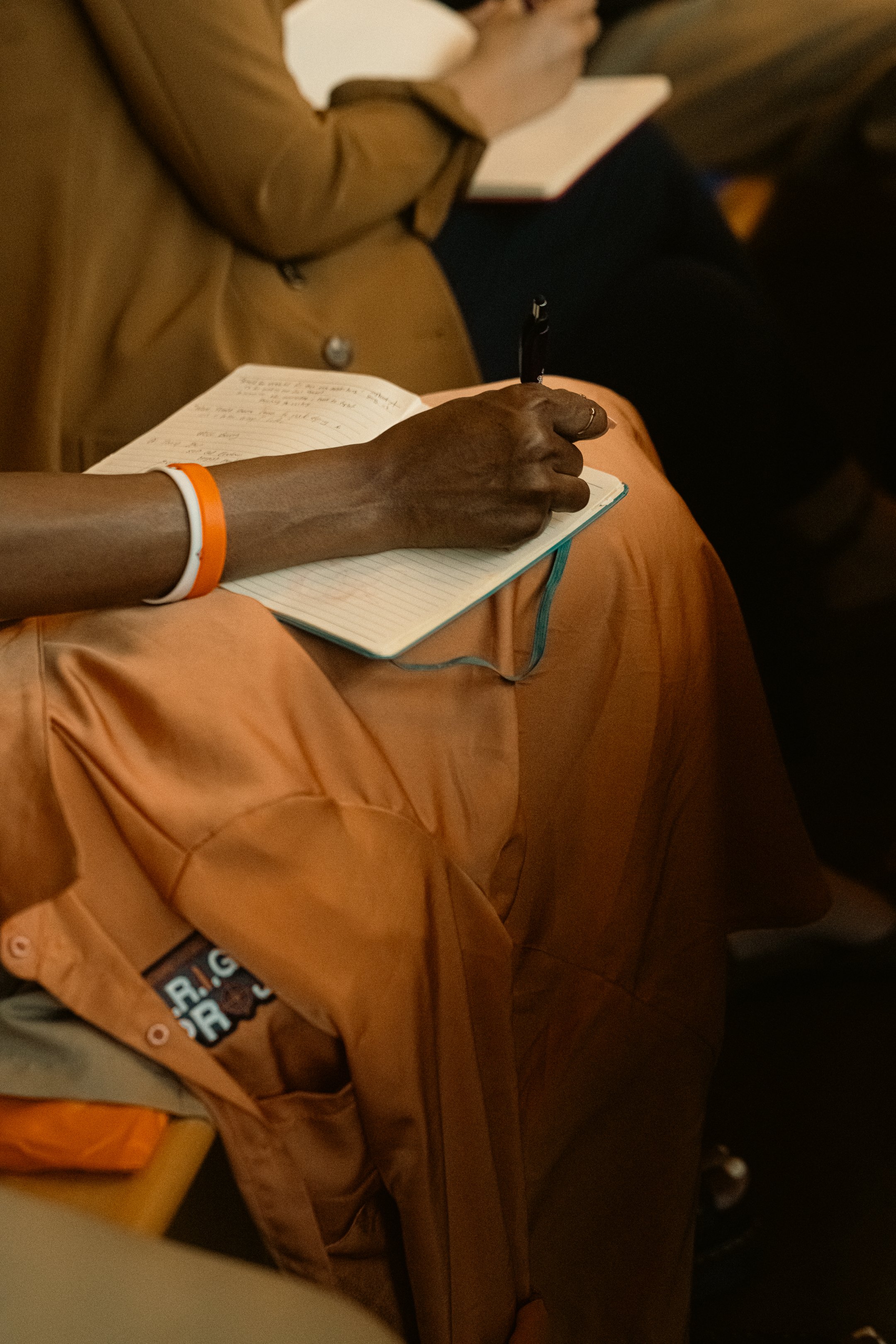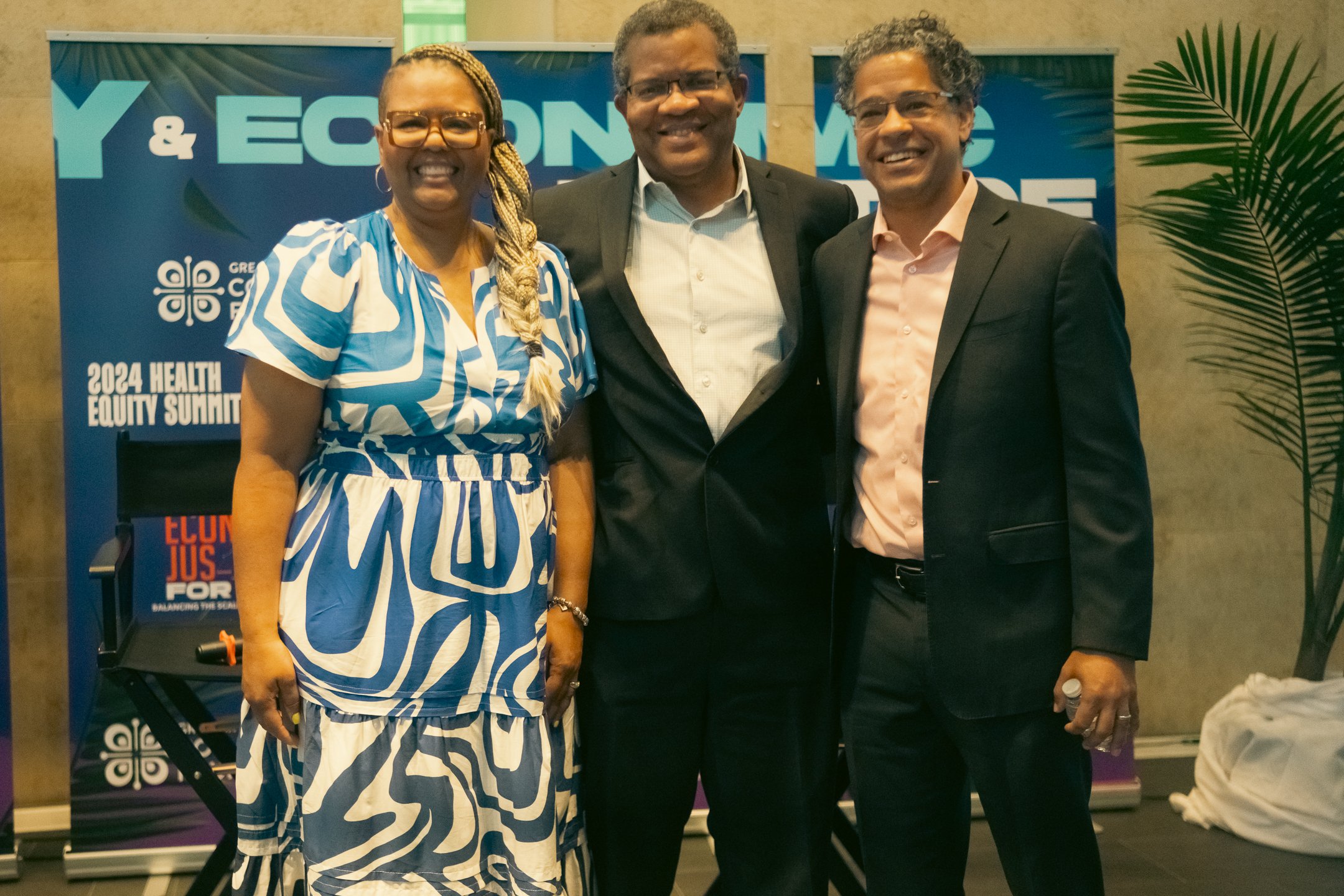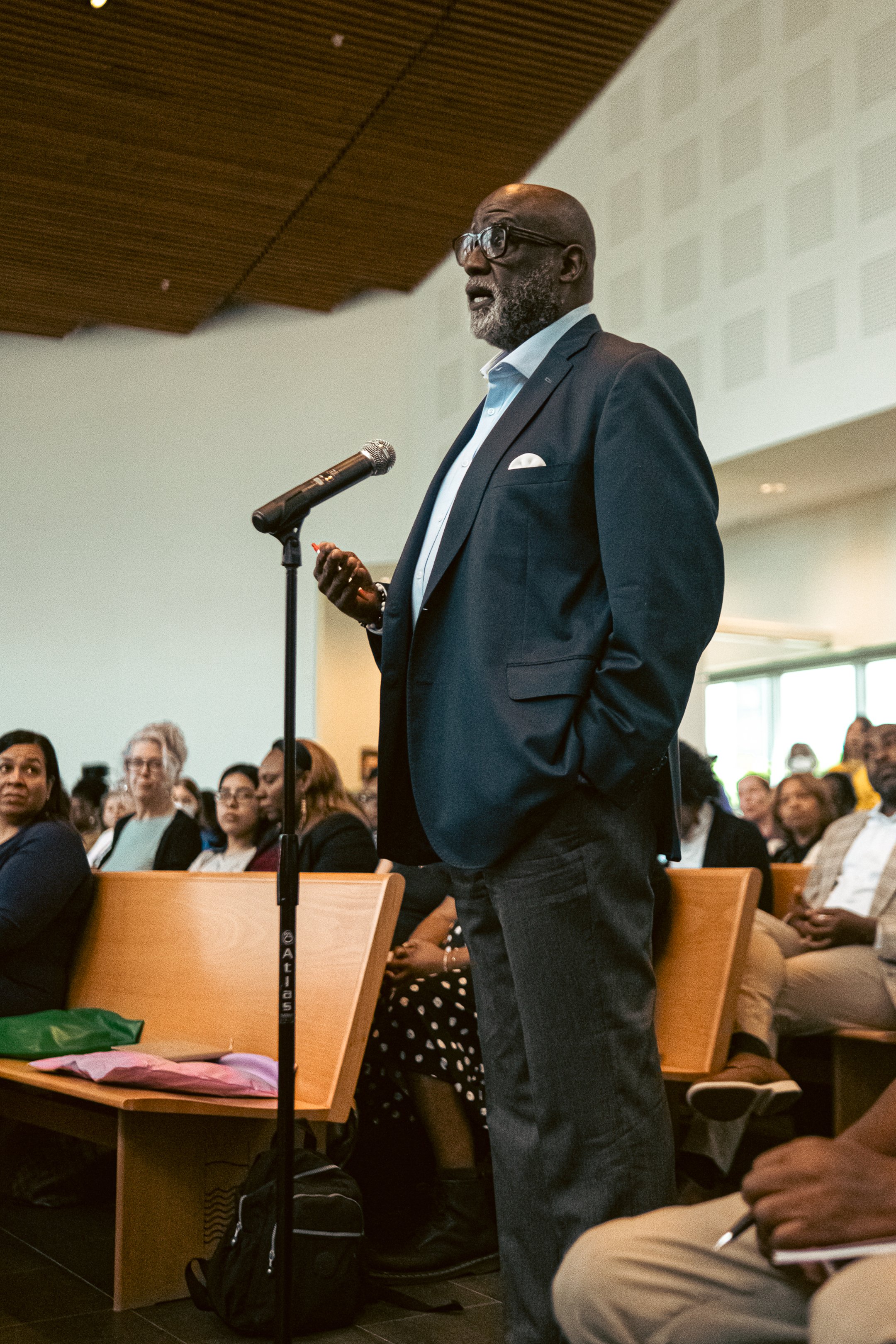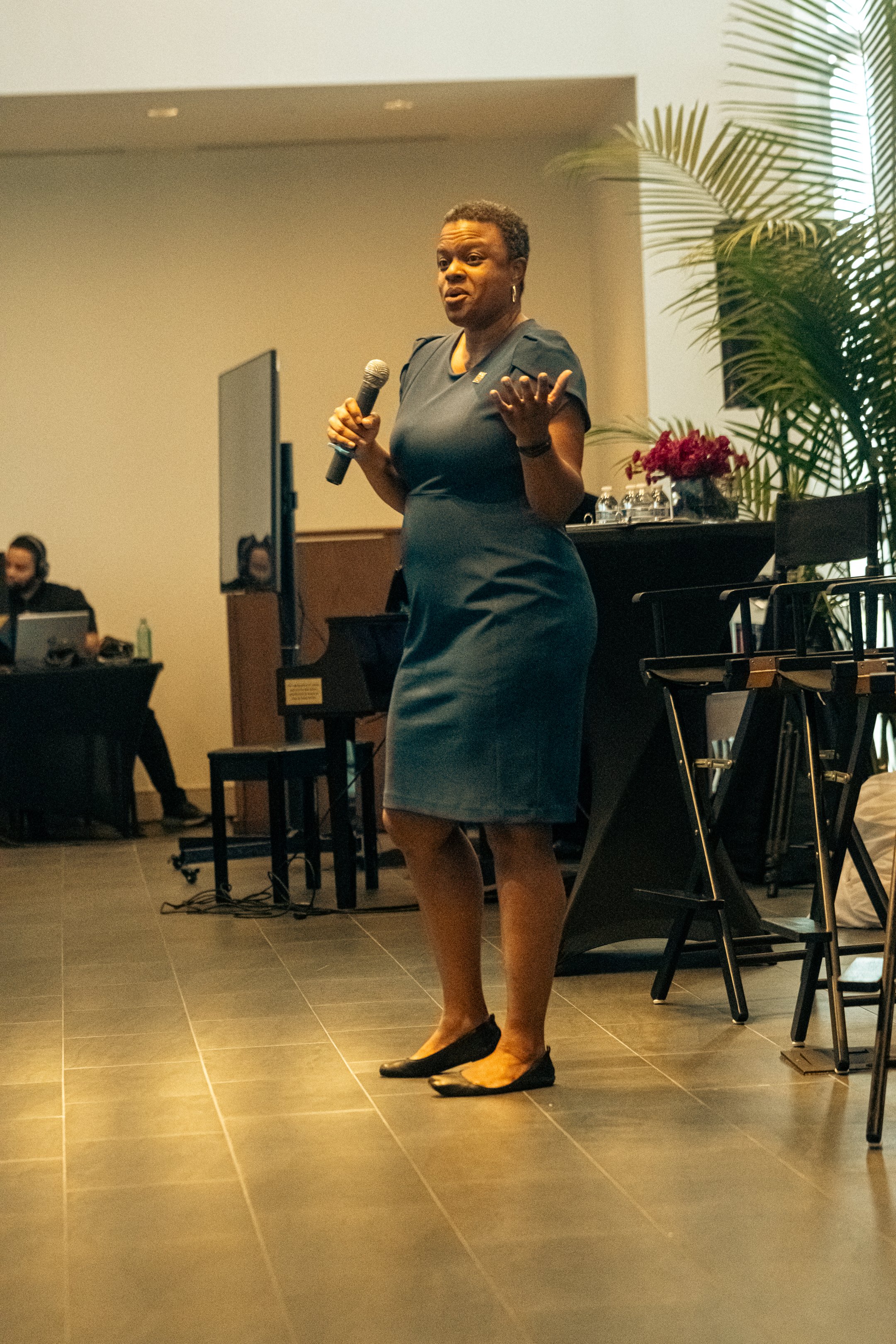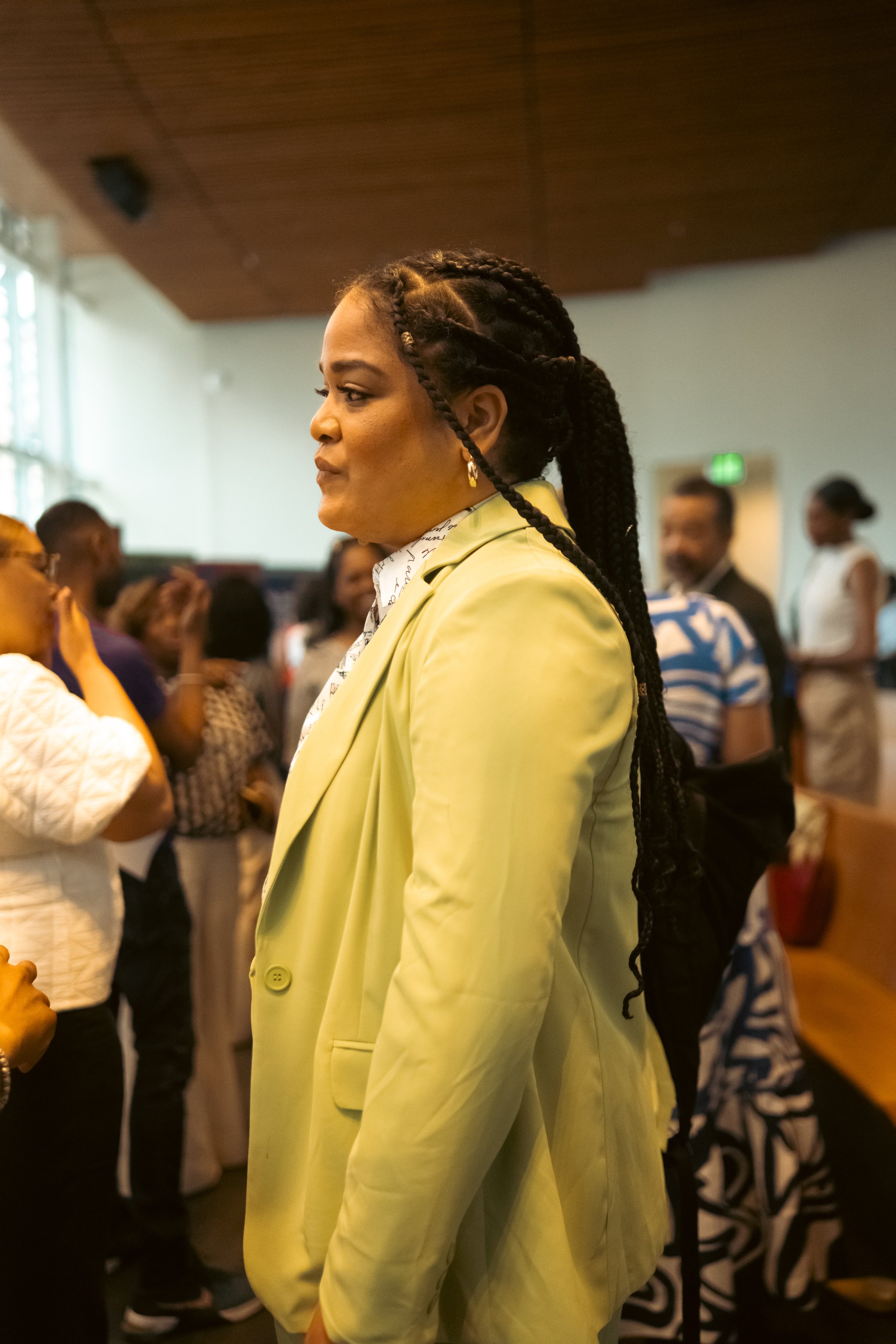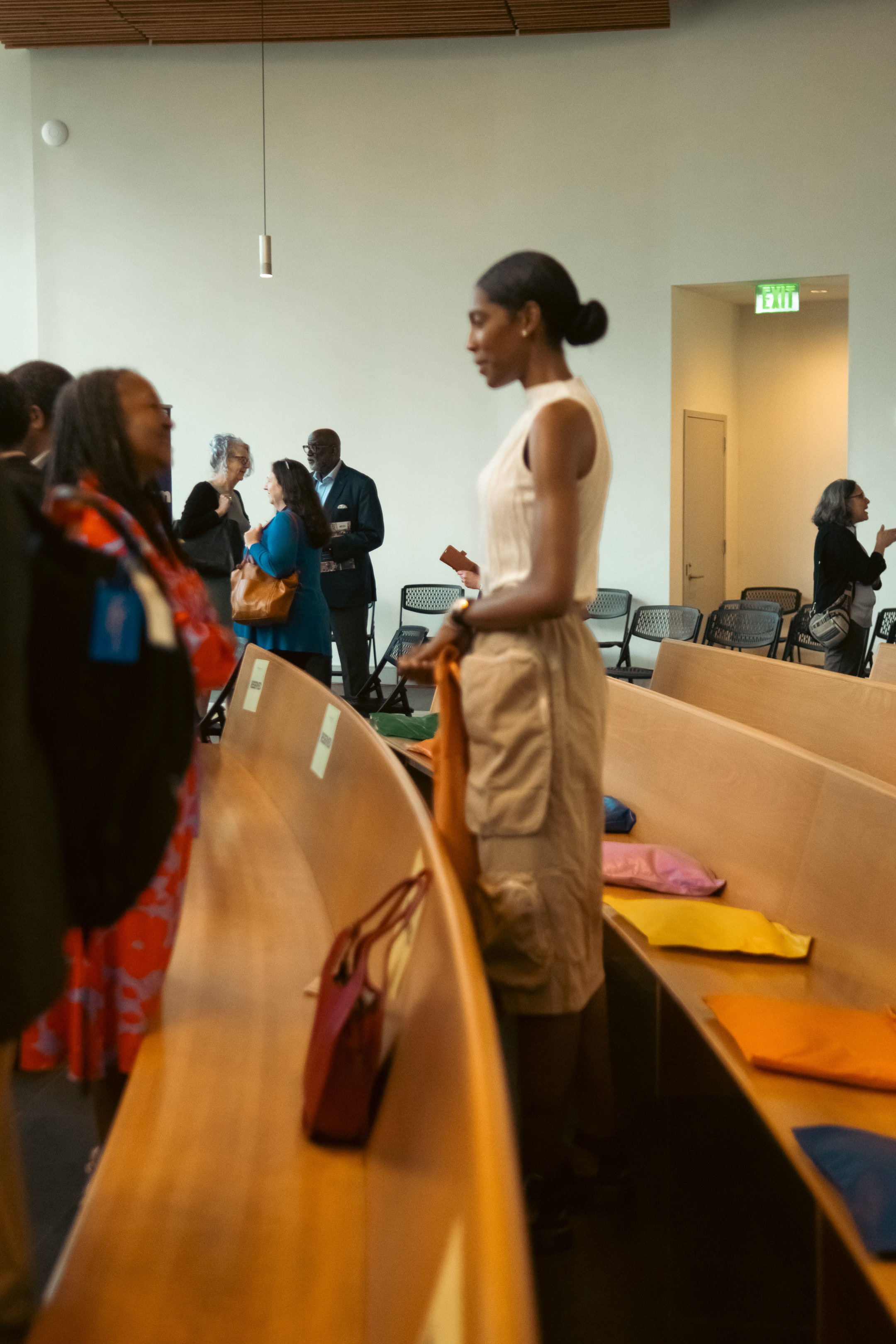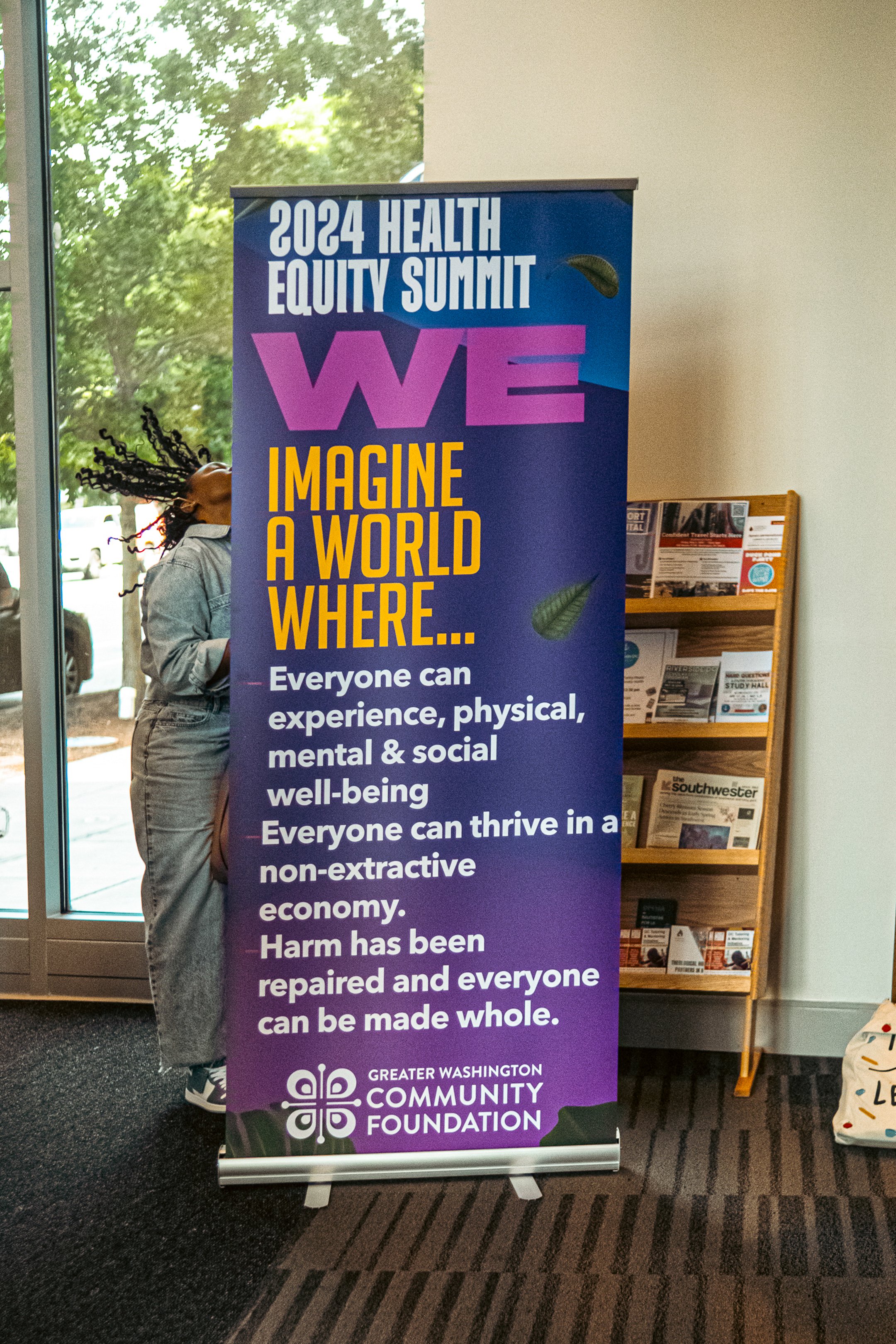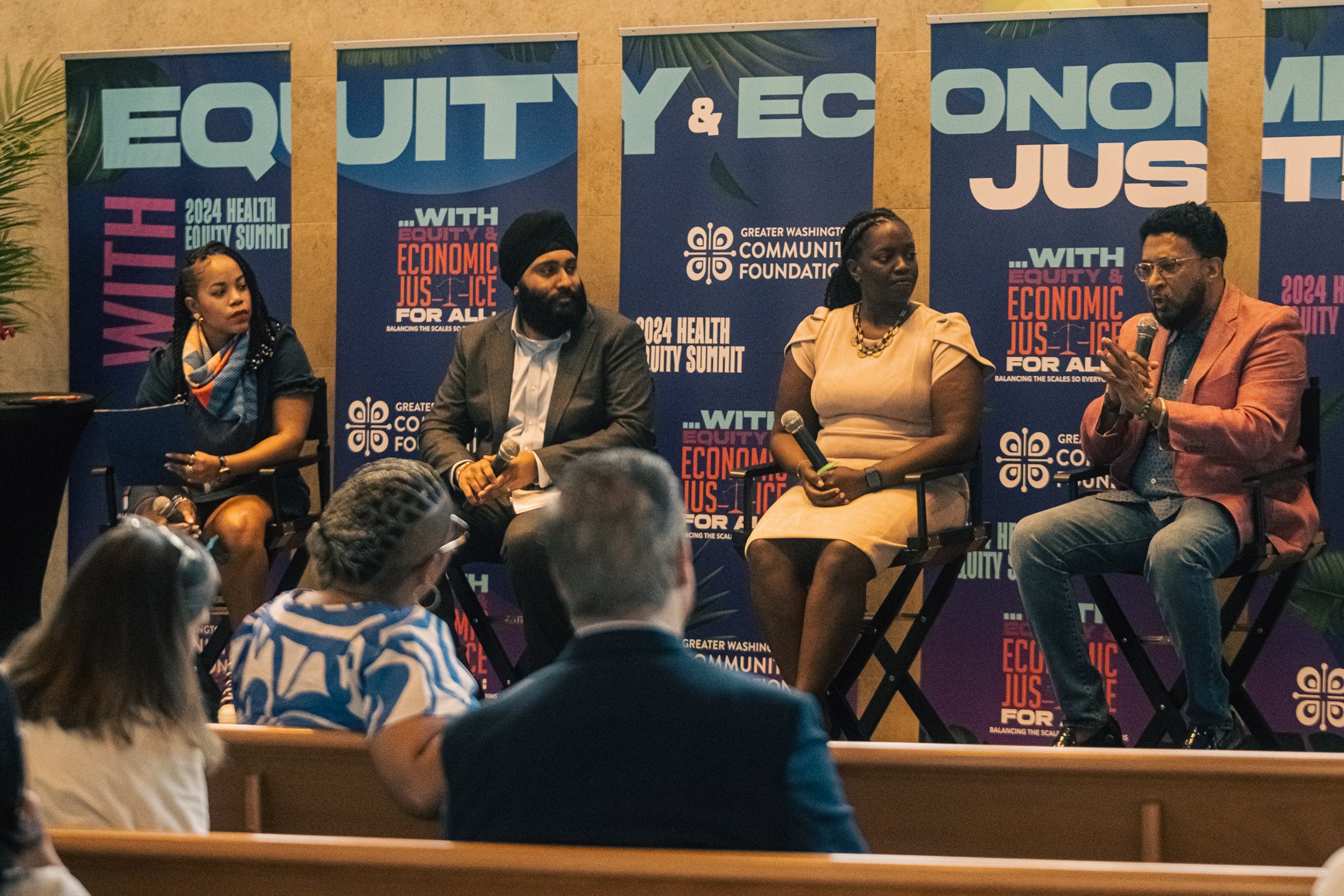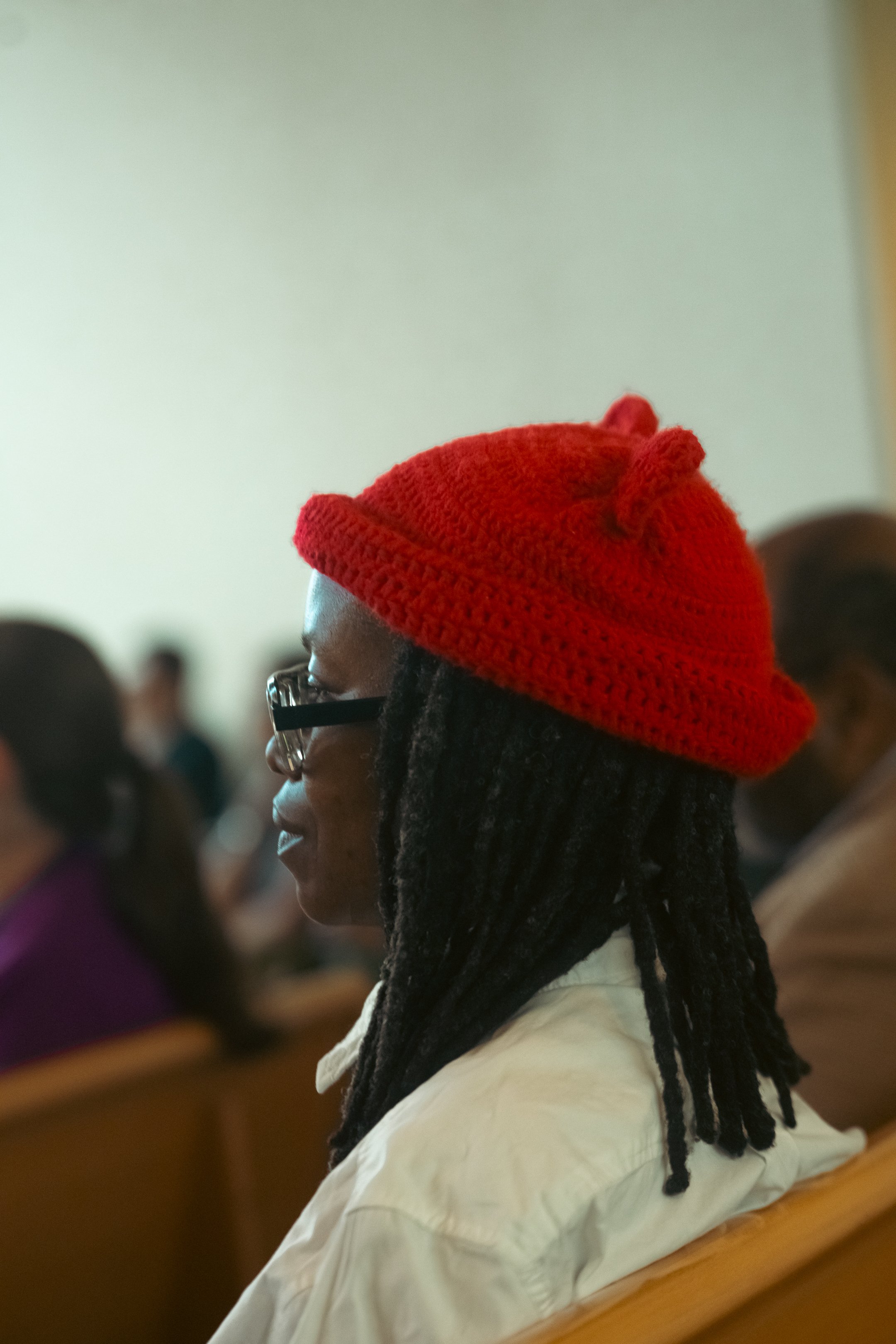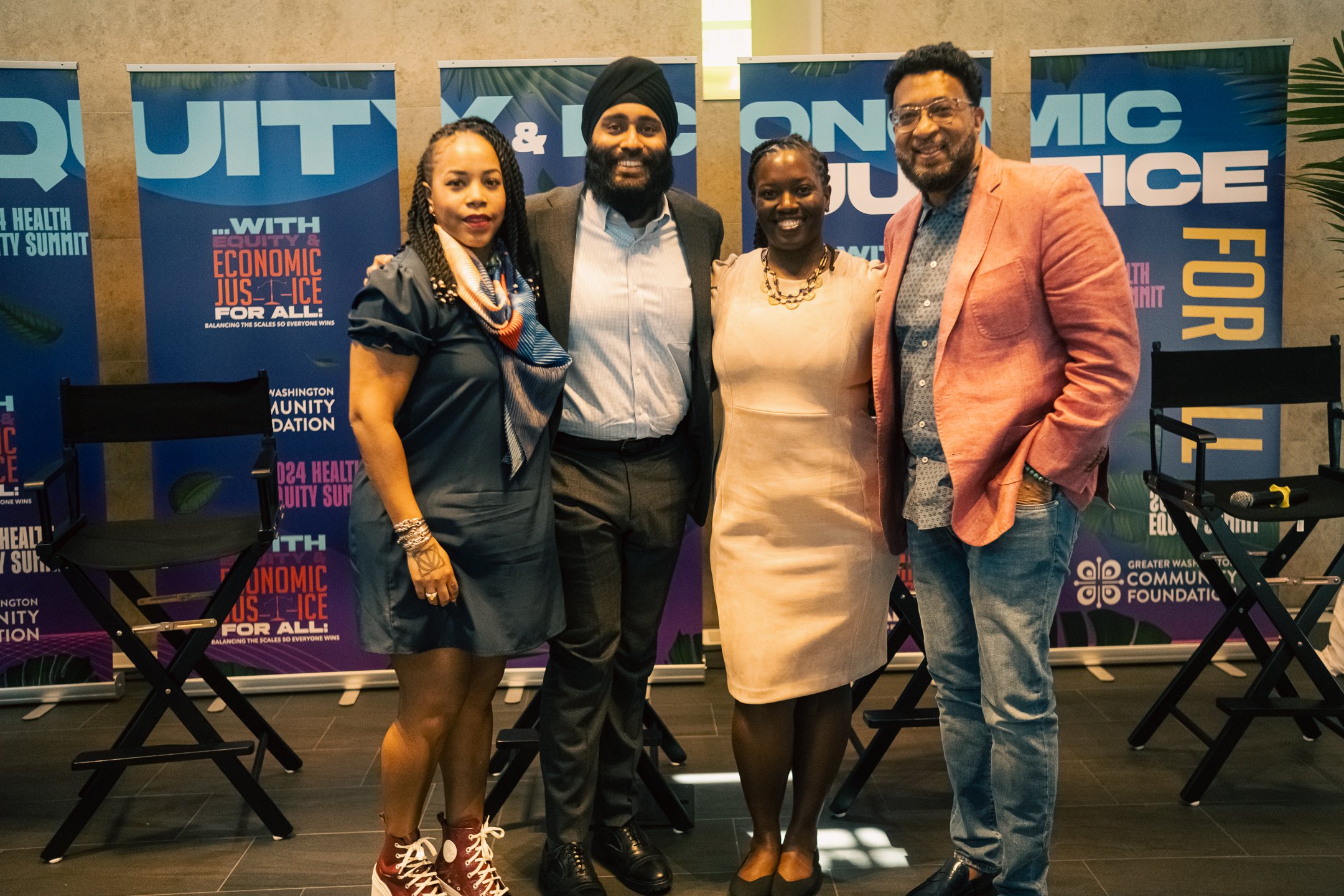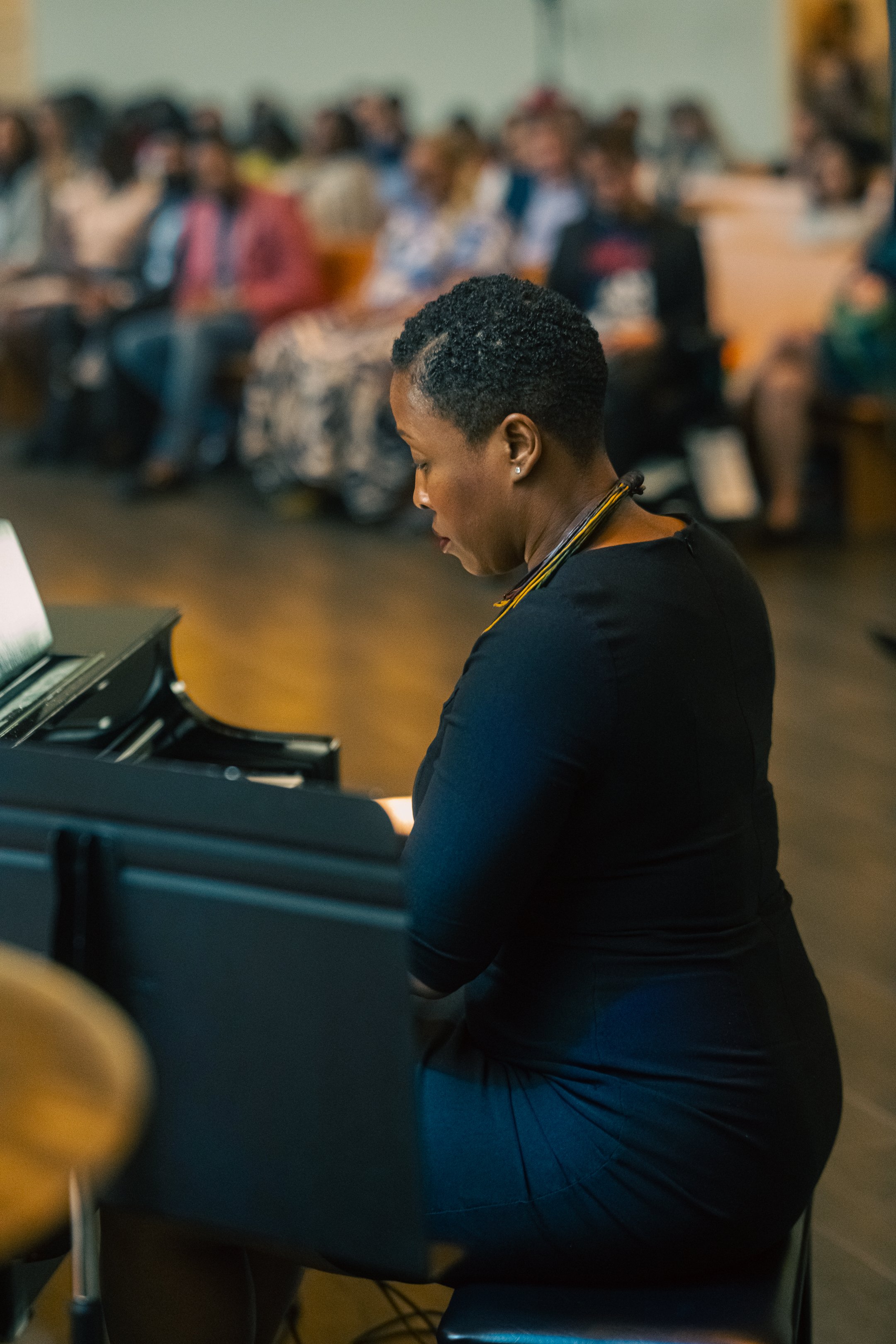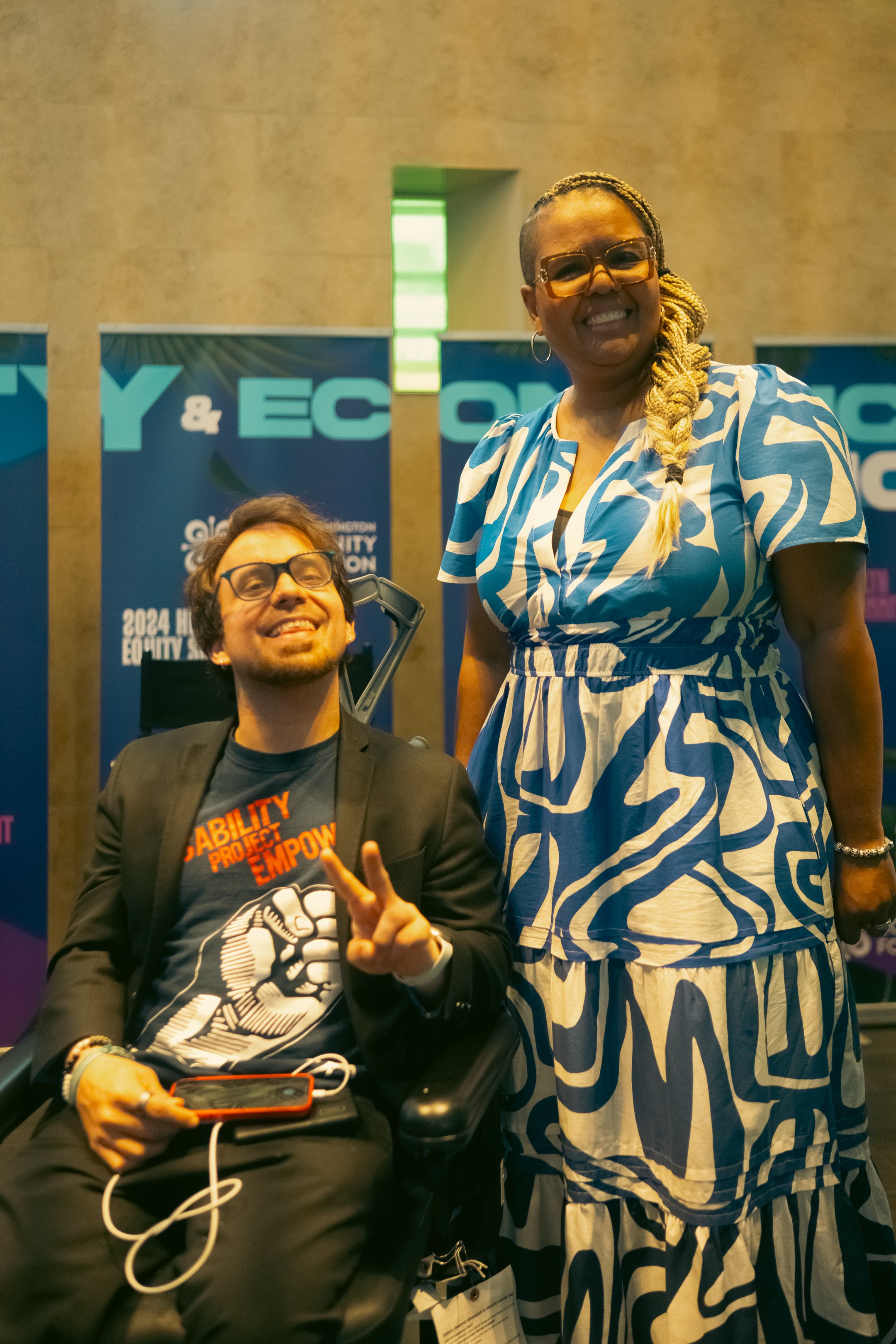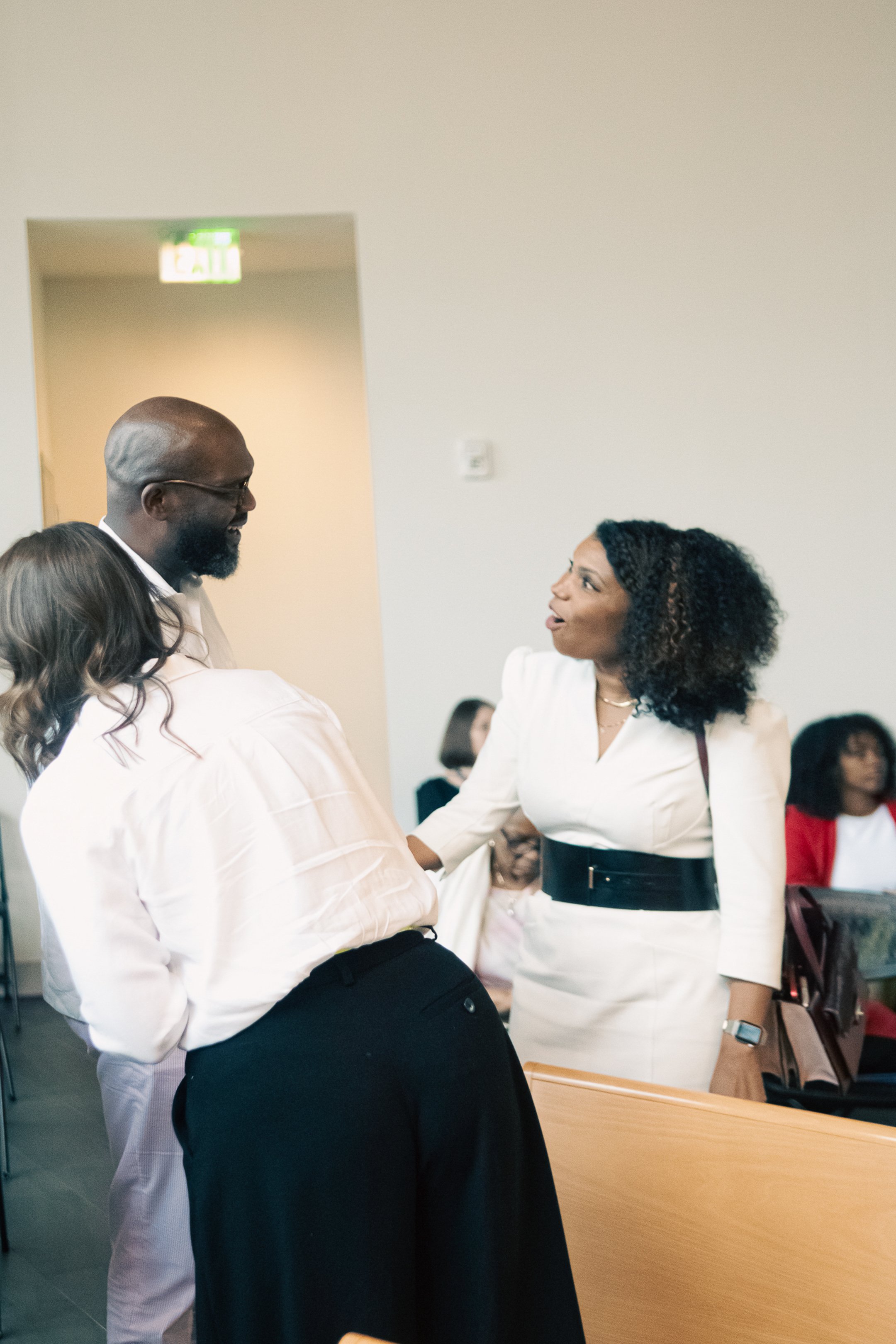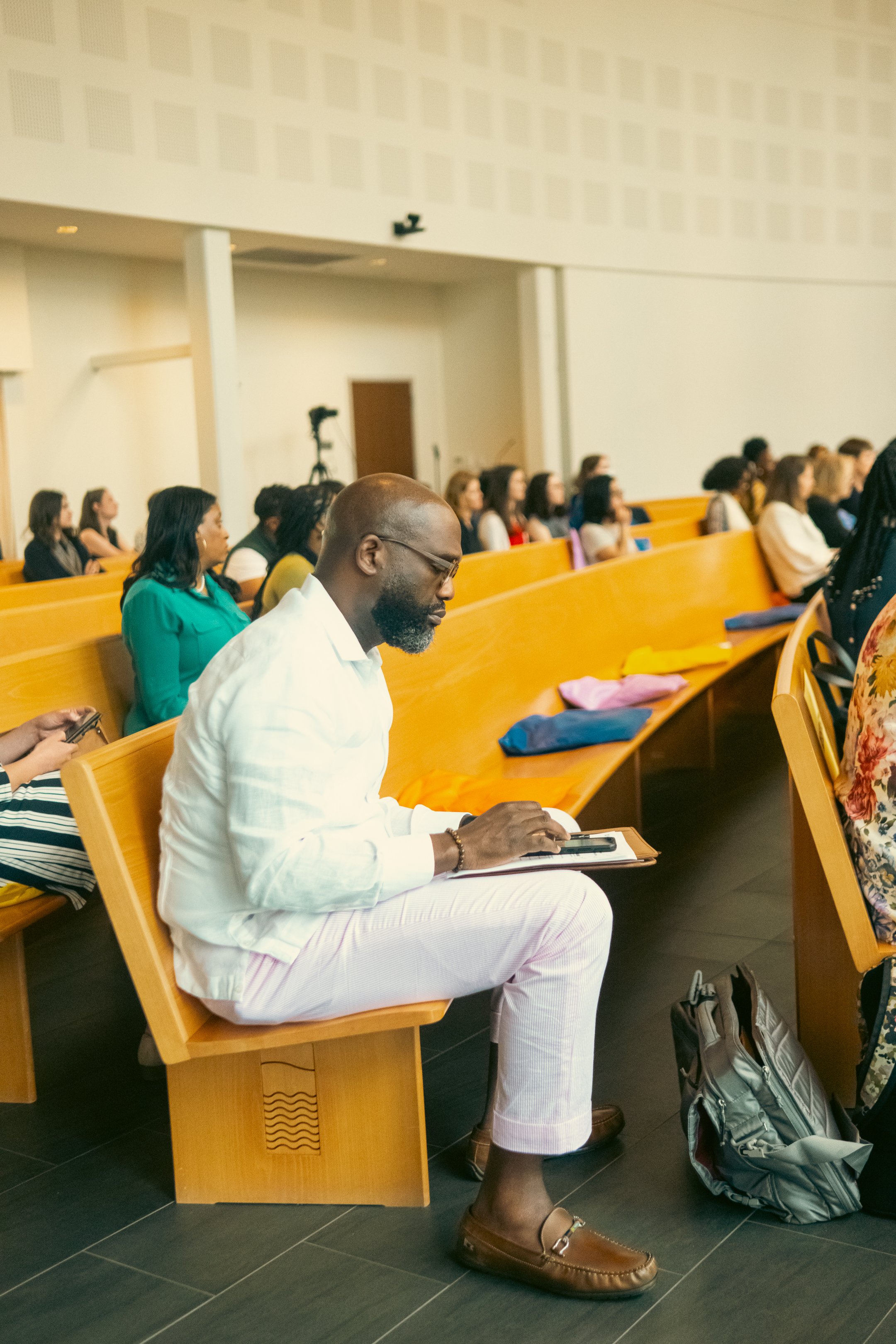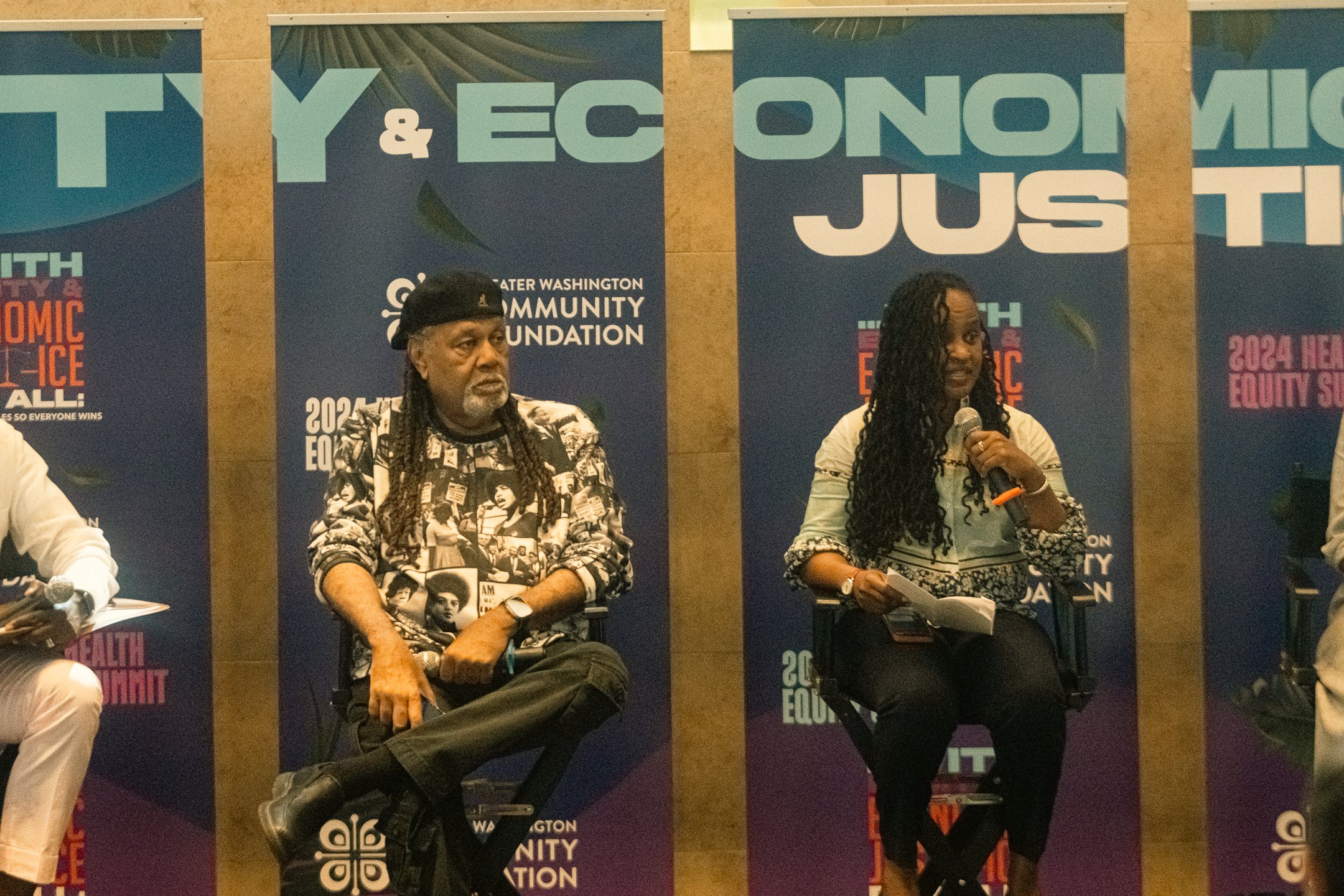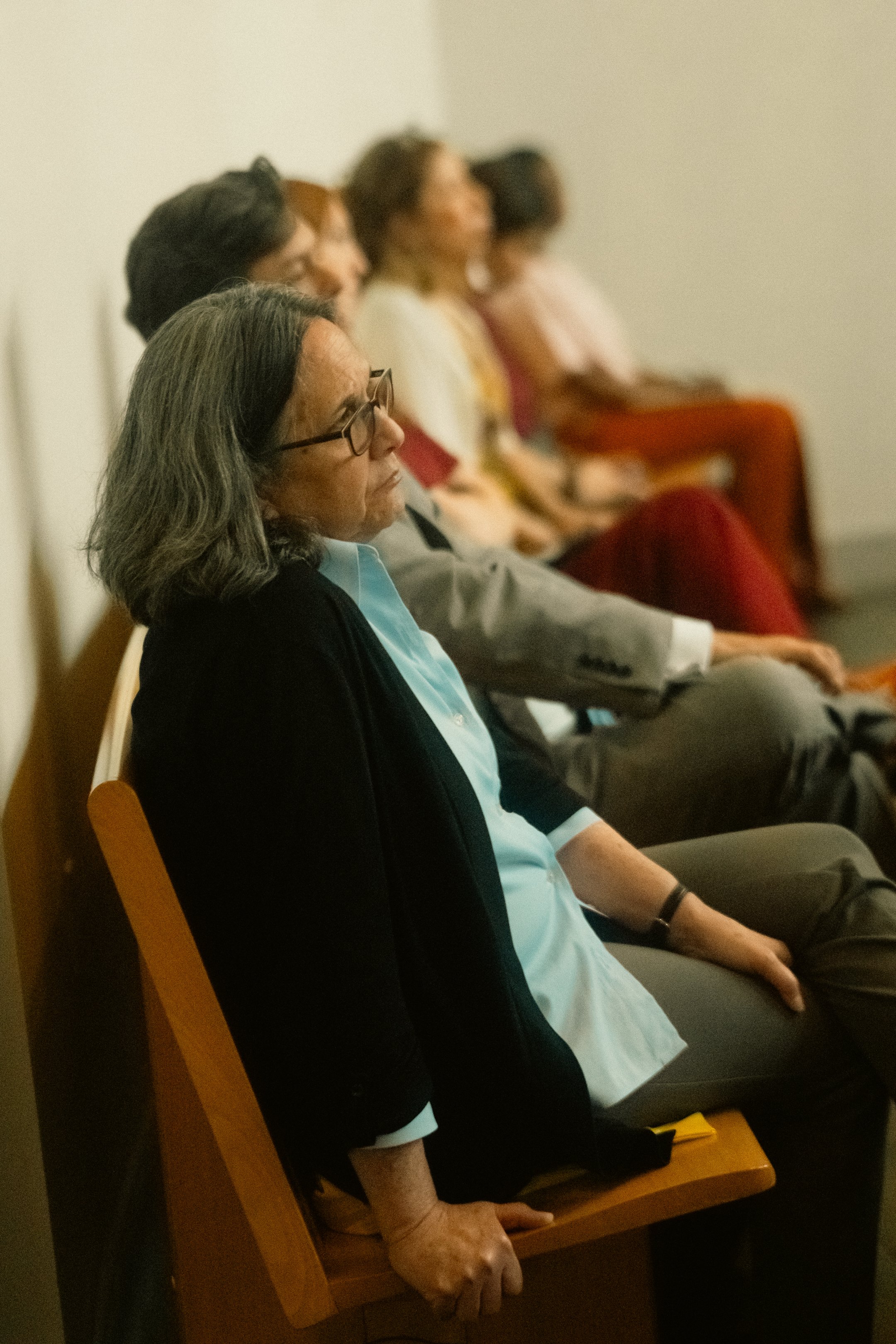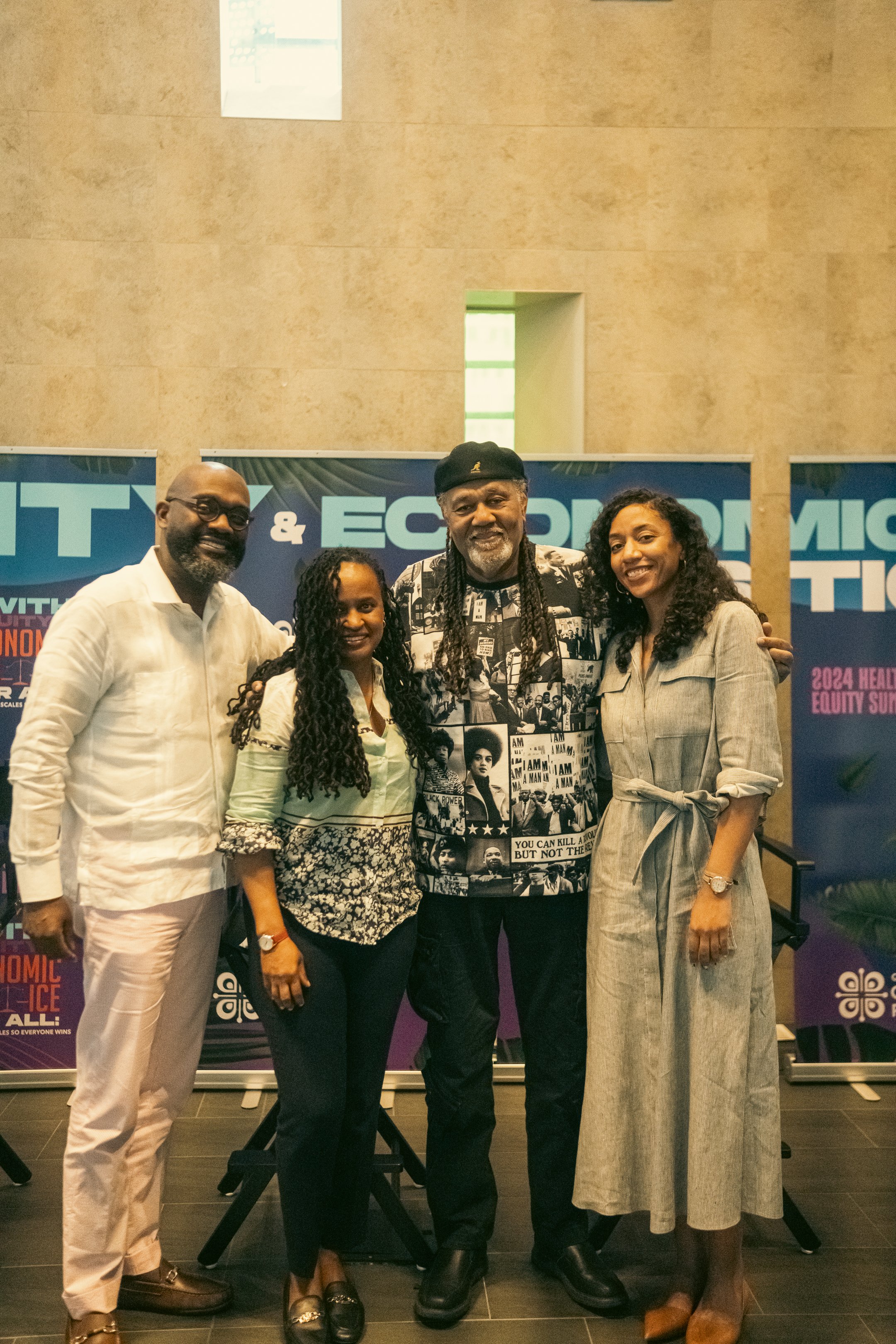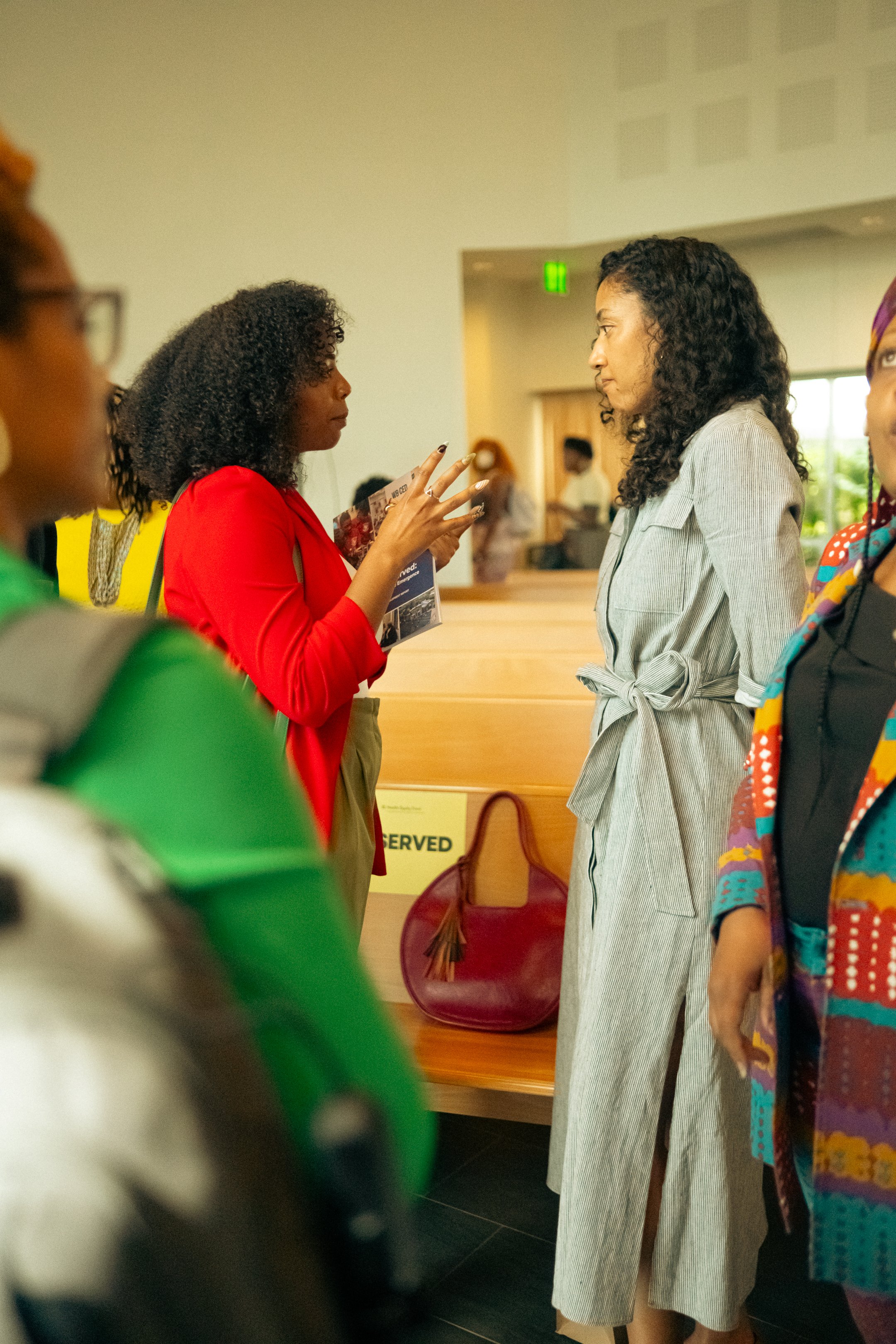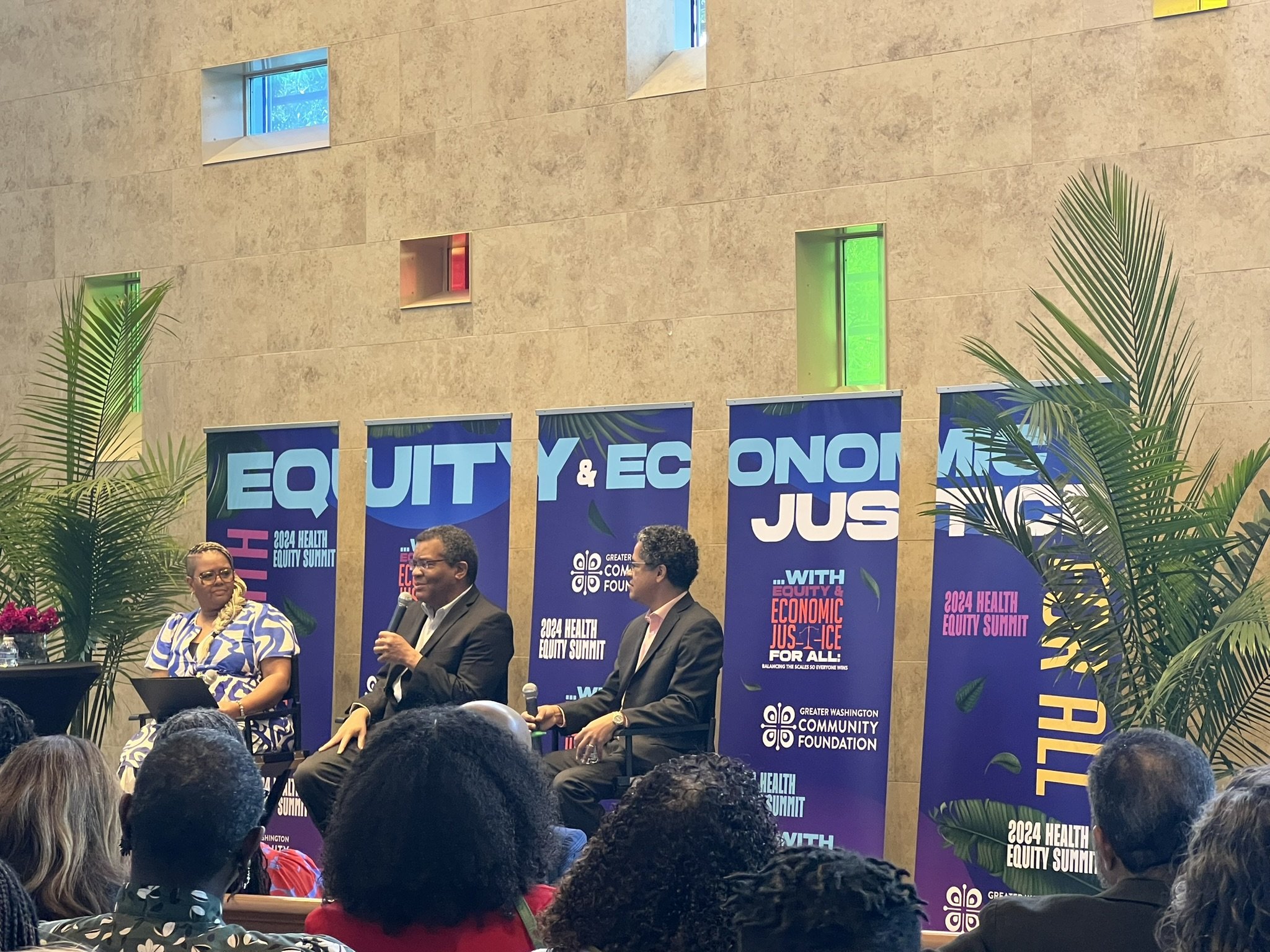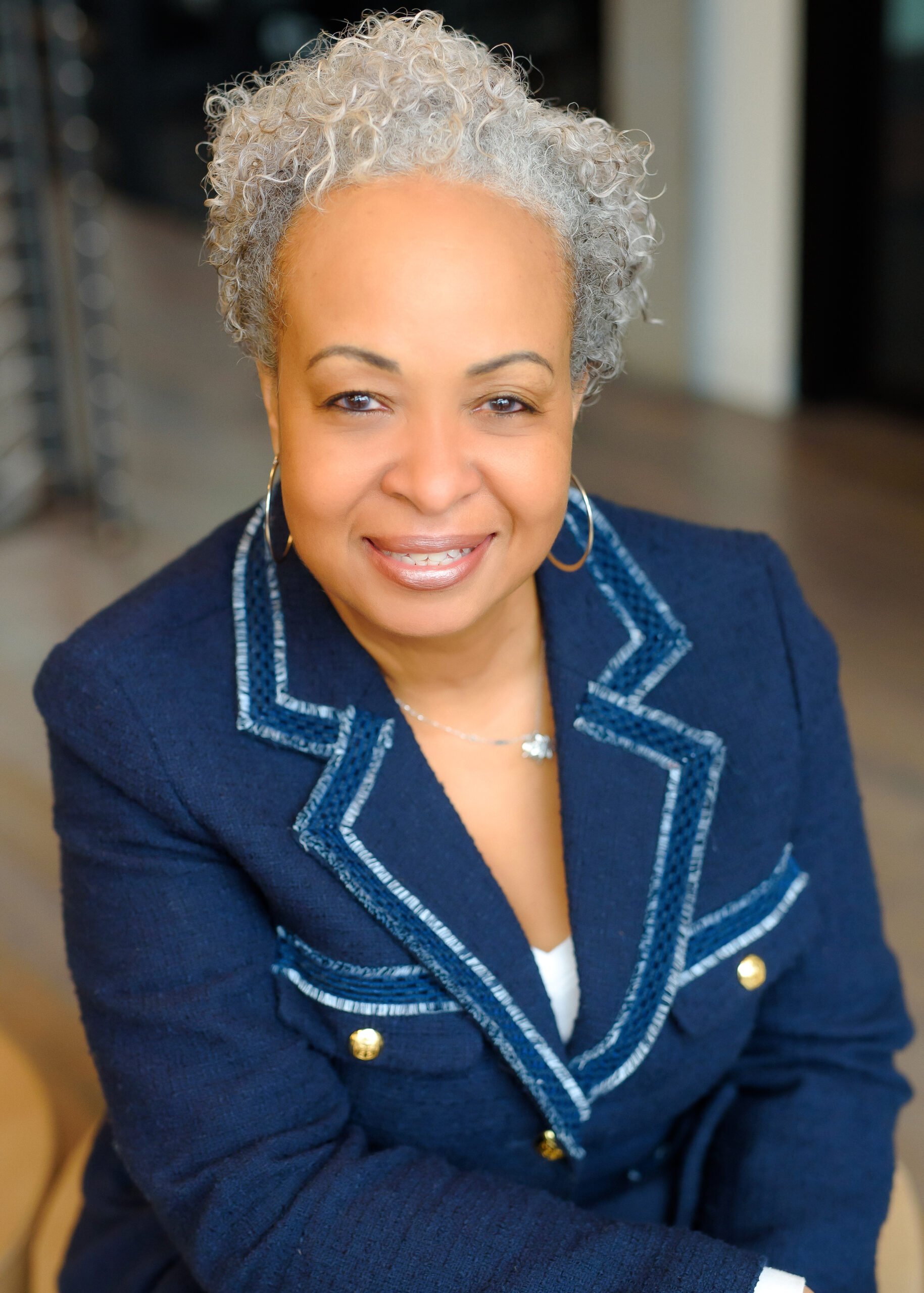Earlier this month, The Community Foundation gathered with guaranteed income advocates from across the region to discuss how to amplify the effects of guaranteed income pilots in the Greater Washington region.
“At The Community Foundation, we believe that guaranteed income is one of the best ways that we can combat poverty with dignity” The Community Foundation’s President & CEO Tonia Wellons shared. “That’s why we’re so excited to convene so many incredible changemakers in this space and discuss how we can continue this work in our region!”
The meeting brought together representatives from nine different guaranteed income across DC, Maryland, and Virginia, including Bread for the City’s Cash Rx, Arlington Community Foundation’s Arlington’s Guarantee, City of Alexandria’s ARISE, iF, a Foundation for Radical Possibility’s Let’s GO DMV!, My Sister’s Place’s RISE Trust, Fairfax County Economic Mobility Pilot, Montgomery County’s MoCoBoost, Mothers Outreach Network’s MotherUp, and The Community Foundation’s Thrive Prince George’s.
A graphic captured by Belinda Jackson at Picture it Possible, showcases the various guaranteed income pilots that attended the convening.
“We’ve seen the impact that guaranteed income has had across the country,” shared Mandi Koba, Program Officer for Economic Mobility at The Community Foundation. “Now we have a chance to explore the impact that it has had – and will hopefully continue to have in the DMV!”
Nationally, there are more than 150 guaranteed income pilots that are currently active or recently concluded – including at least 12 different pilots in Greater Washington region.
Mary Bogle, Principal Research Associate at the Urban Institute provides an overview of guaranteed income pilots across the country.
During the event, representatives had the chance to network with peers from across the region and share best practices. They also heard a presentation from Mary Bogle, Principal Research Associate at the Urban Institute about guaranteed income pilot best practices and trends, nationally. Bogle and her team at Urban have provided research and evaluation for guaranteed income pilots across the country and the region.
“The socioeconomic impact of guaranteed income is clearly positive,” Bogle shared. “What we need is to continue to research and advocate for more funding so we can discover the scope and scale of that impact for our community.”
After Bogle’s presentation, representatives were divided into break-out groups to discuss various themes relative to guaranteed income work including Narrative Building, How to go from Pilot to Policy, and ‘Failing Forward: Best Practices for Project Implementation.
A graphic captured by Belinda Jackson at Picture it Possible, highlights the main takeaways discussed in each of the various break-out groups.
In the “Failing Forward” group, participants talked about the importance of working with funders to build relationships of trust in order to communicate outcomes and impact within a realistic, holistic lens – but also to be innovative in the types of outcomes they measure – outcomes like improved mental health or increased time spent with children that may fall outside traditional benchmarks for programmatic success
Meanwhile, the Narrative Building group discussed the importance of storytelling and narrative building in painting an accurate picture of the impact of guaranteed income initiatives.
“Welfare queens, ‘Pulling yourself up by your bootstraps’ – there are so many negative narratives out there that don’t accurately represent the realities faced by those we serve,” shared one representative. “As we work with our participants to empower them to share their own stories, we are able to elevate narratives of dignity and community that are the backbone of this work.”
Finally, the pilot to policy group discussed ways to leverage narrative building and evaluation findings to plan for the future – by advocating for funding and policy to continue their efforts at scale.
Across the board, partners expressed the need to continue to collaborate across jurisdictions to share information, combat false narratives, and continue to advocate for funding and support across the region.
“Collaboration and partnership is the key to bringing about lasting and sustainable change,” Wellons added. “We look forward to continuing to partner with all of you, as we work together to promote economic mobility in the Greater Washington region.”
The Community Foundation is committed to continuing to invest in, advocate for, and support the progression of guaranteed income pilot programs across the Greater Washington region. For more information, visit https://www.thecommunityfoundation.org/guaranteed-income



